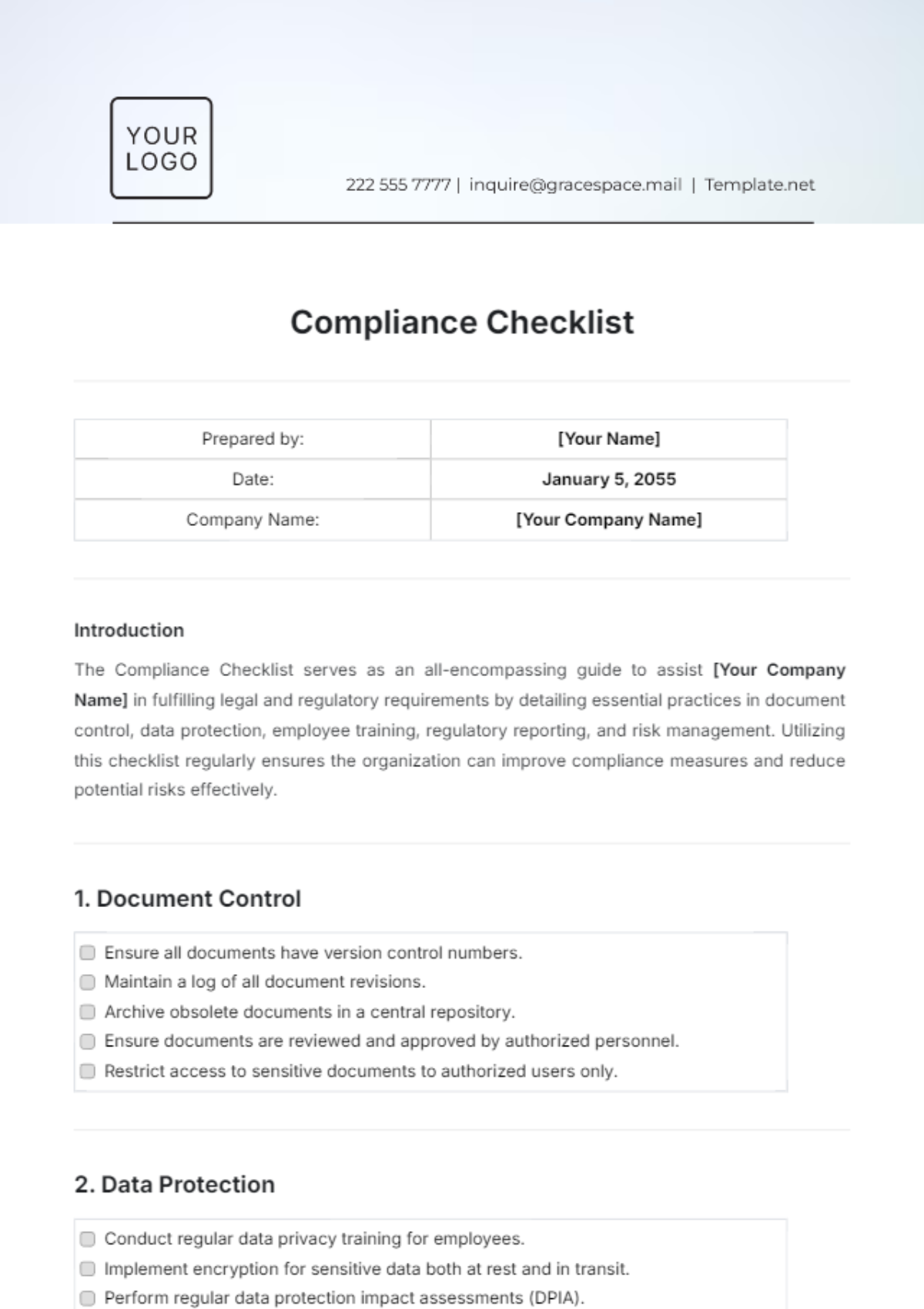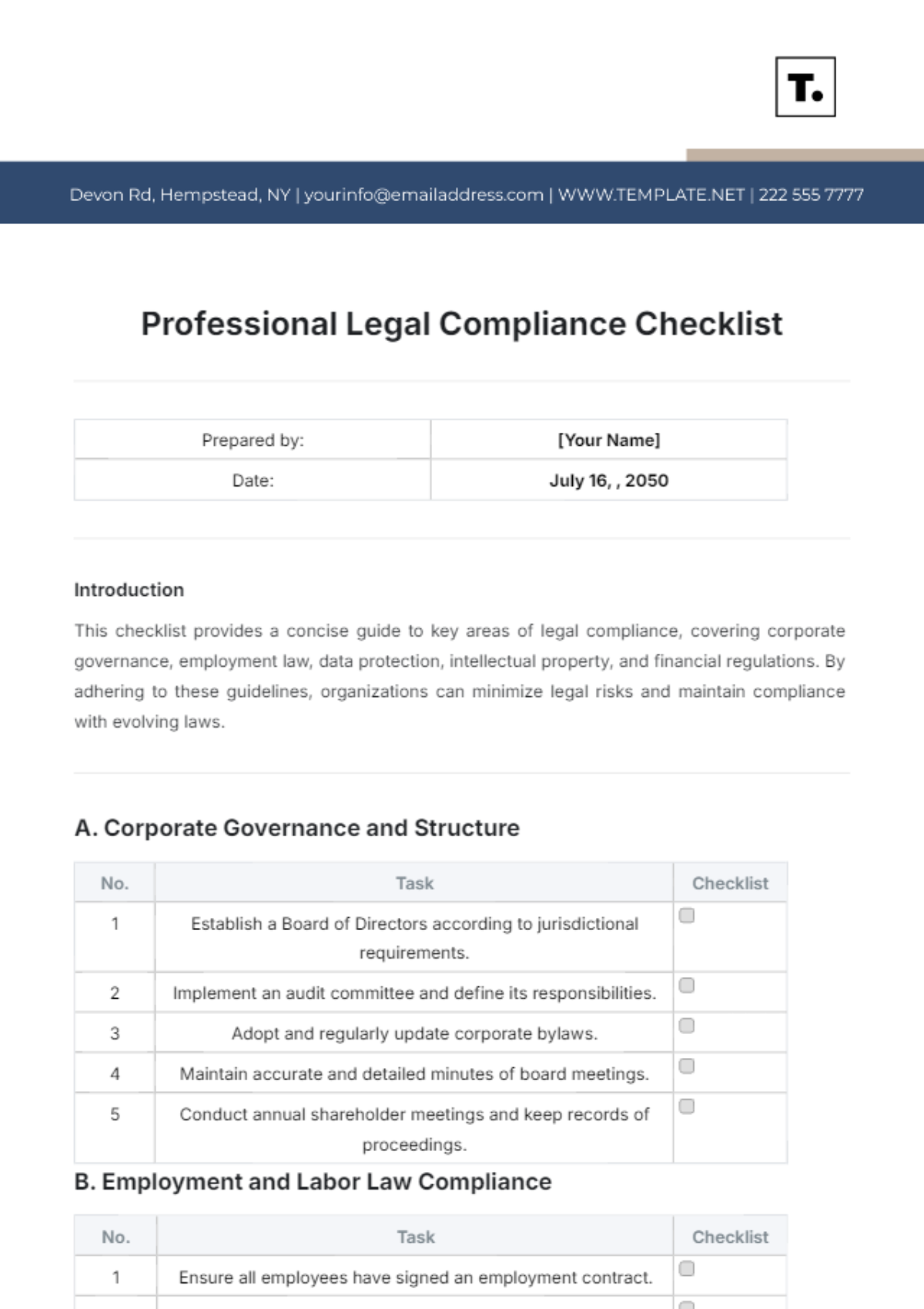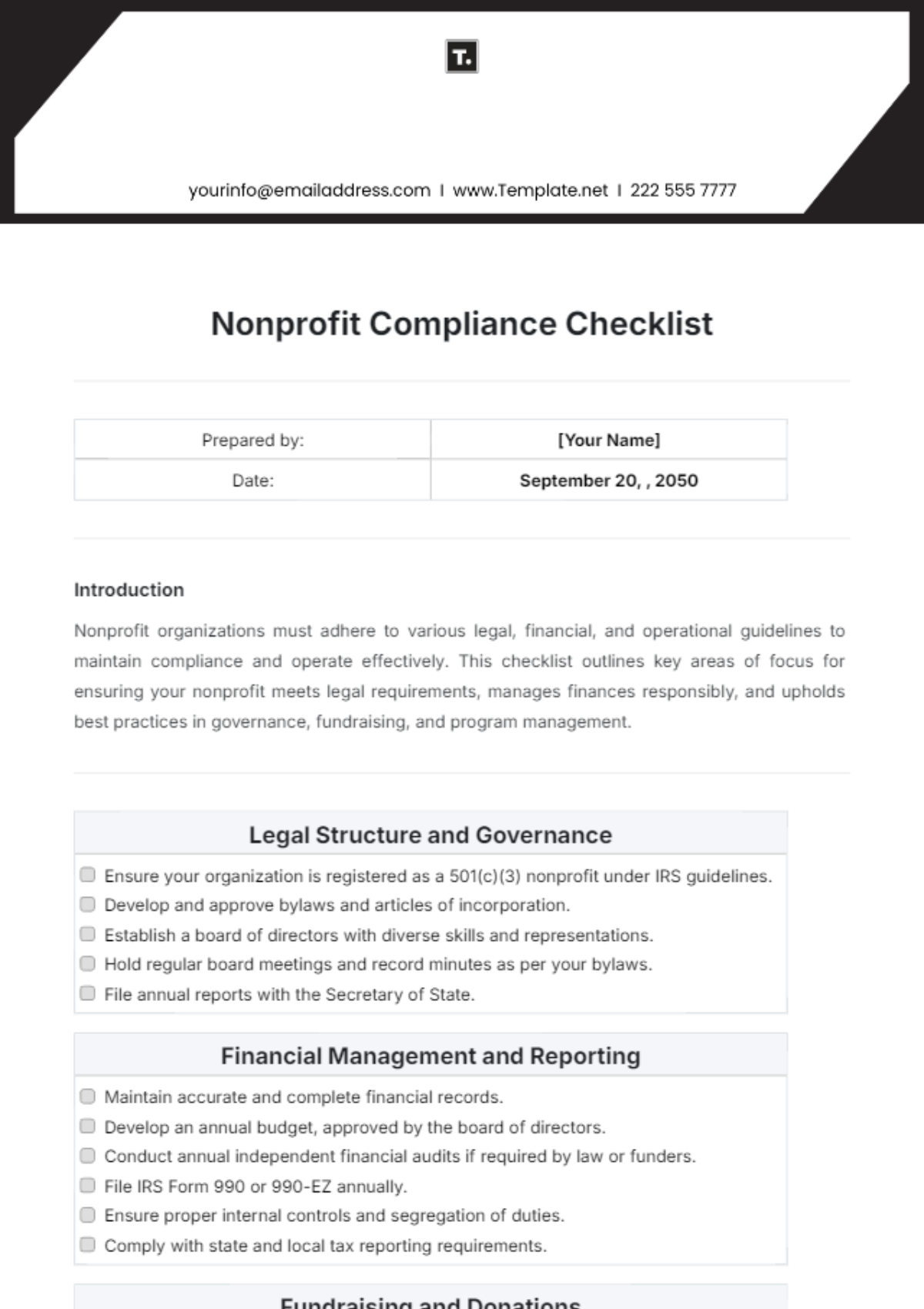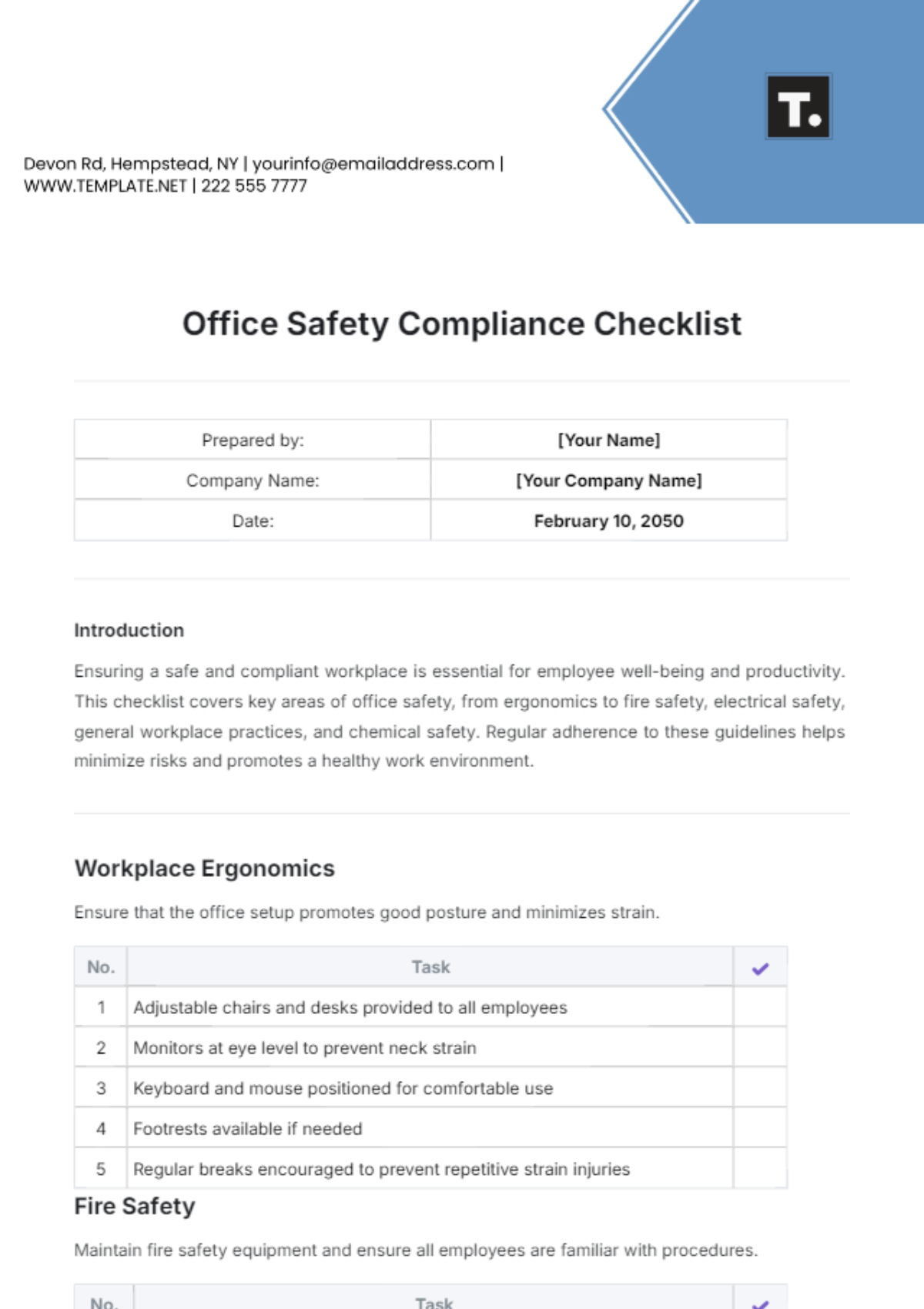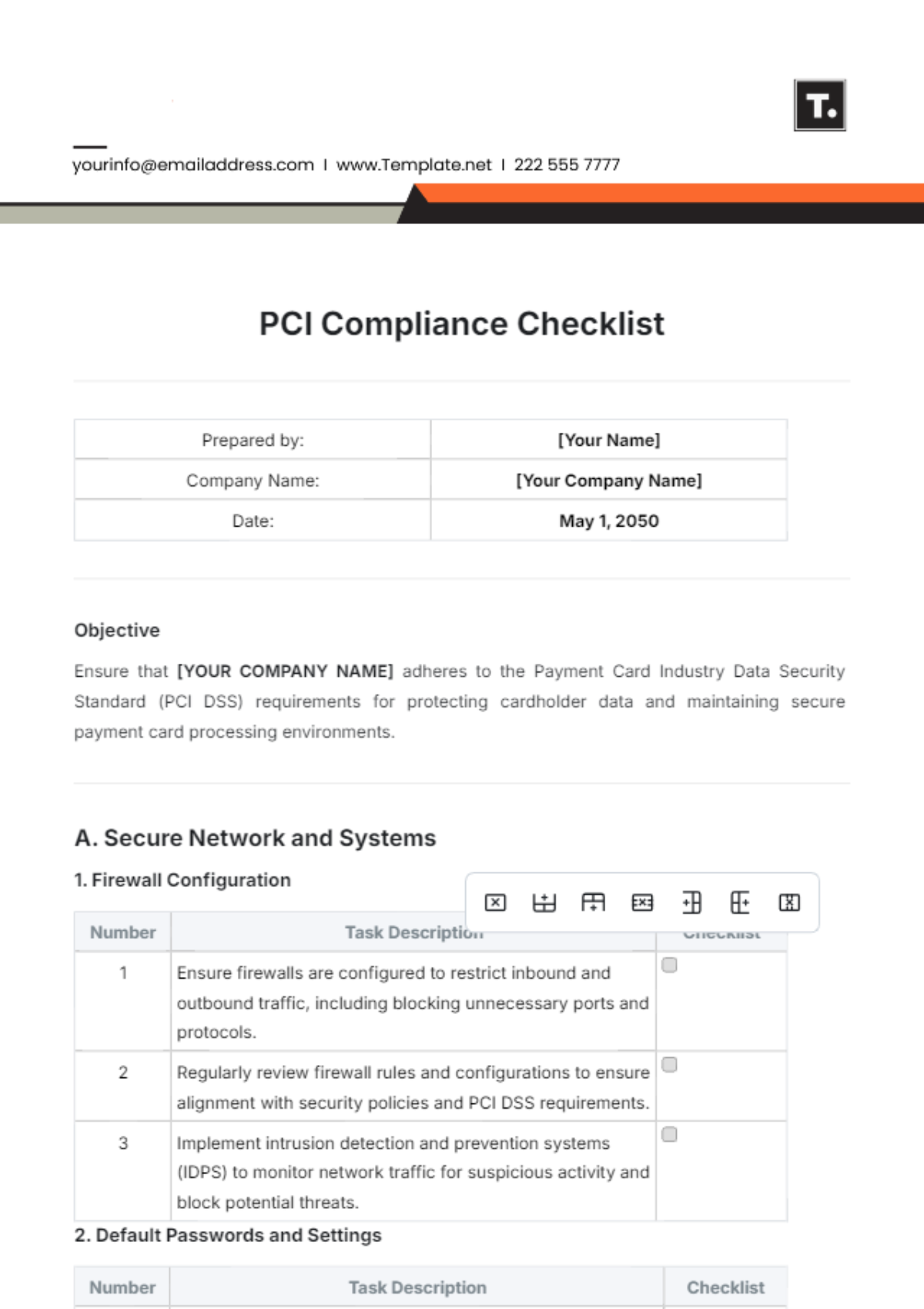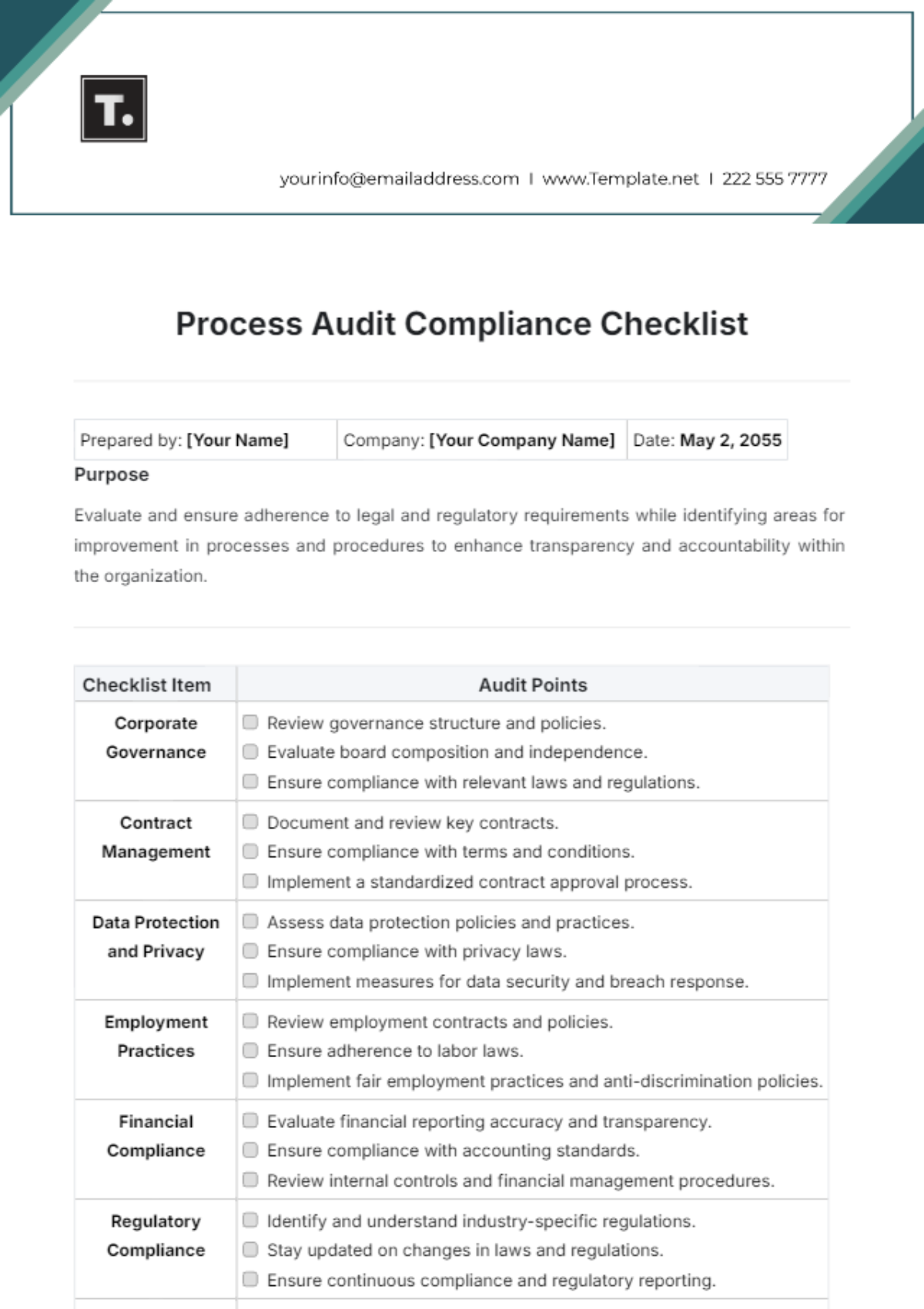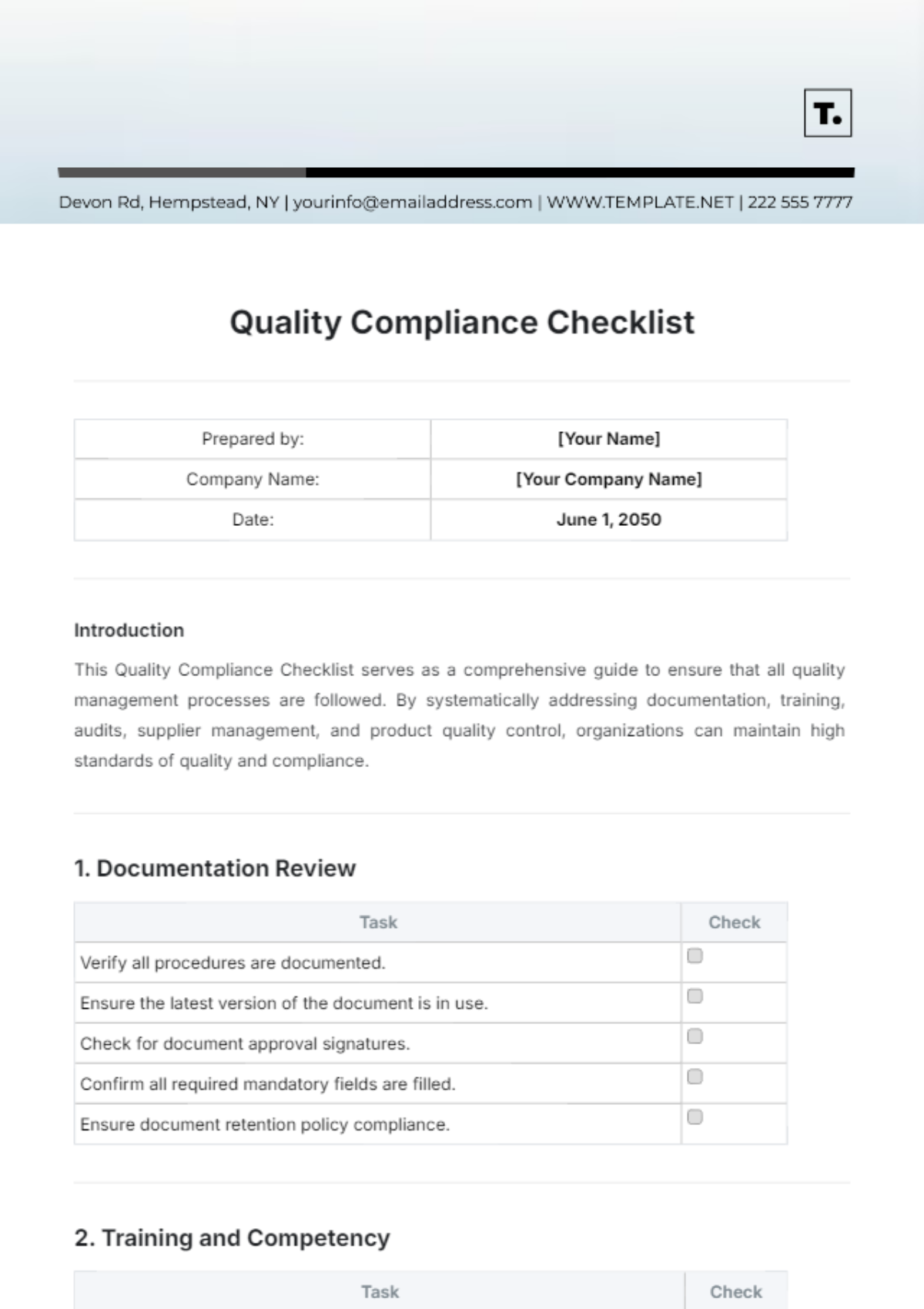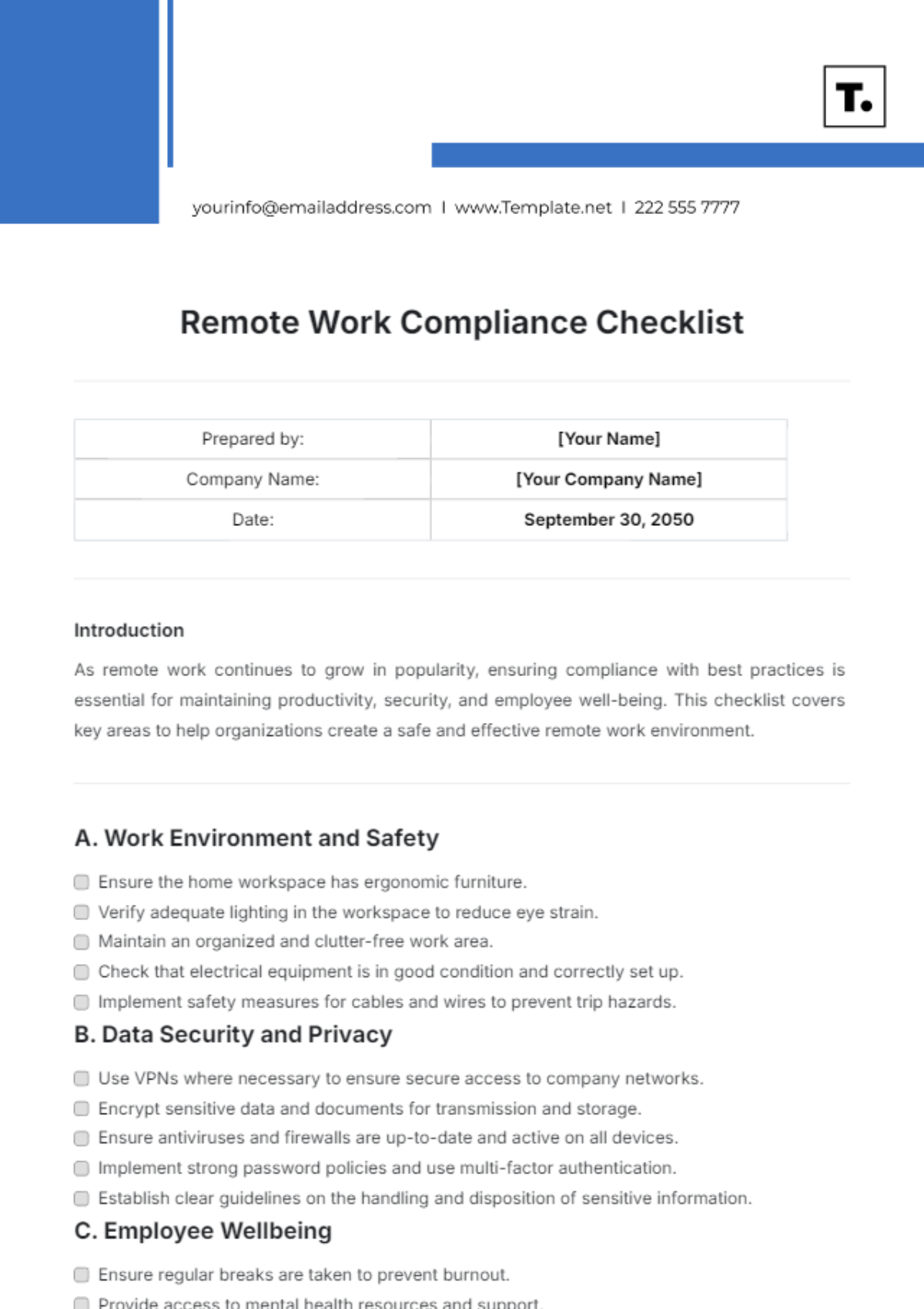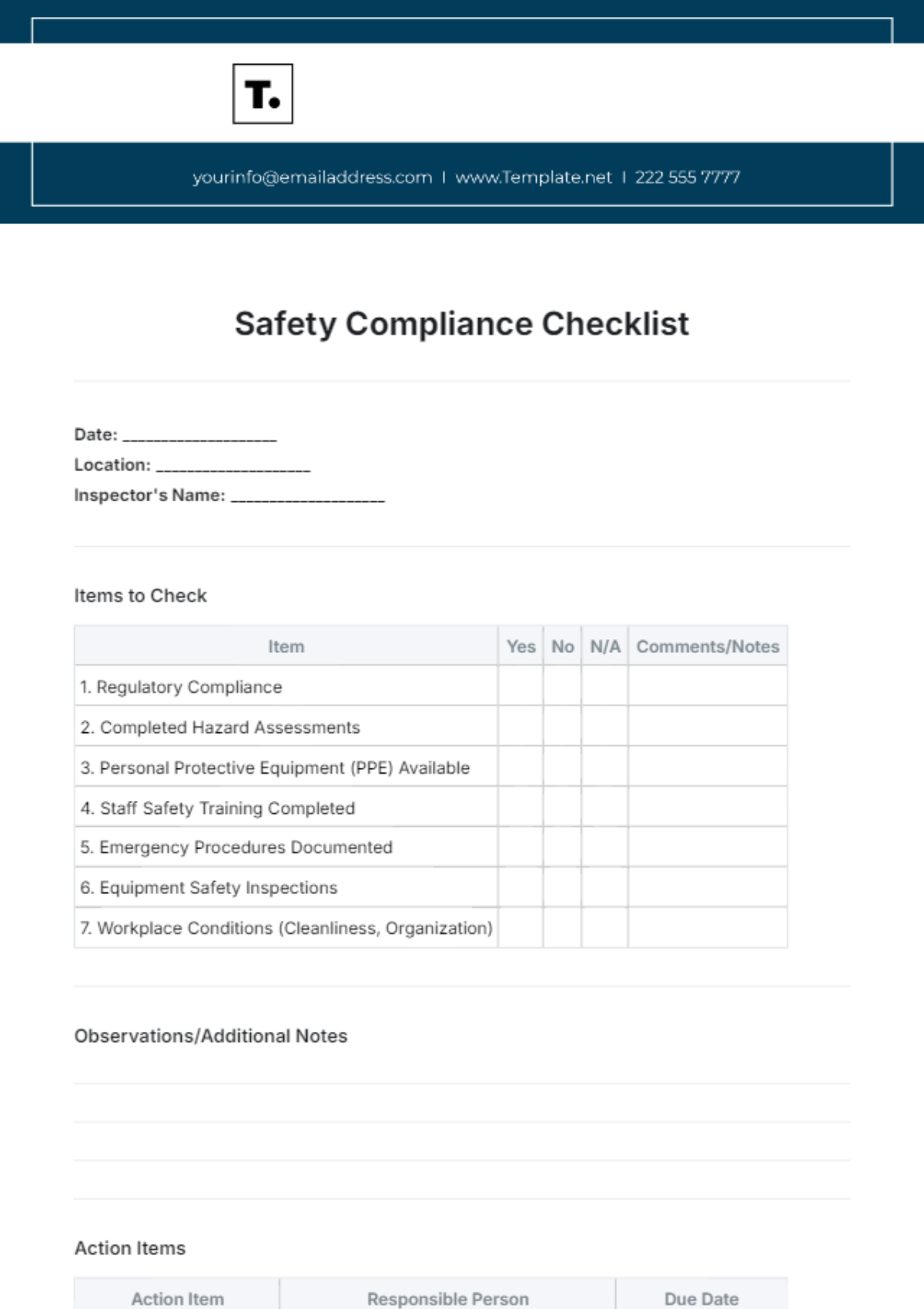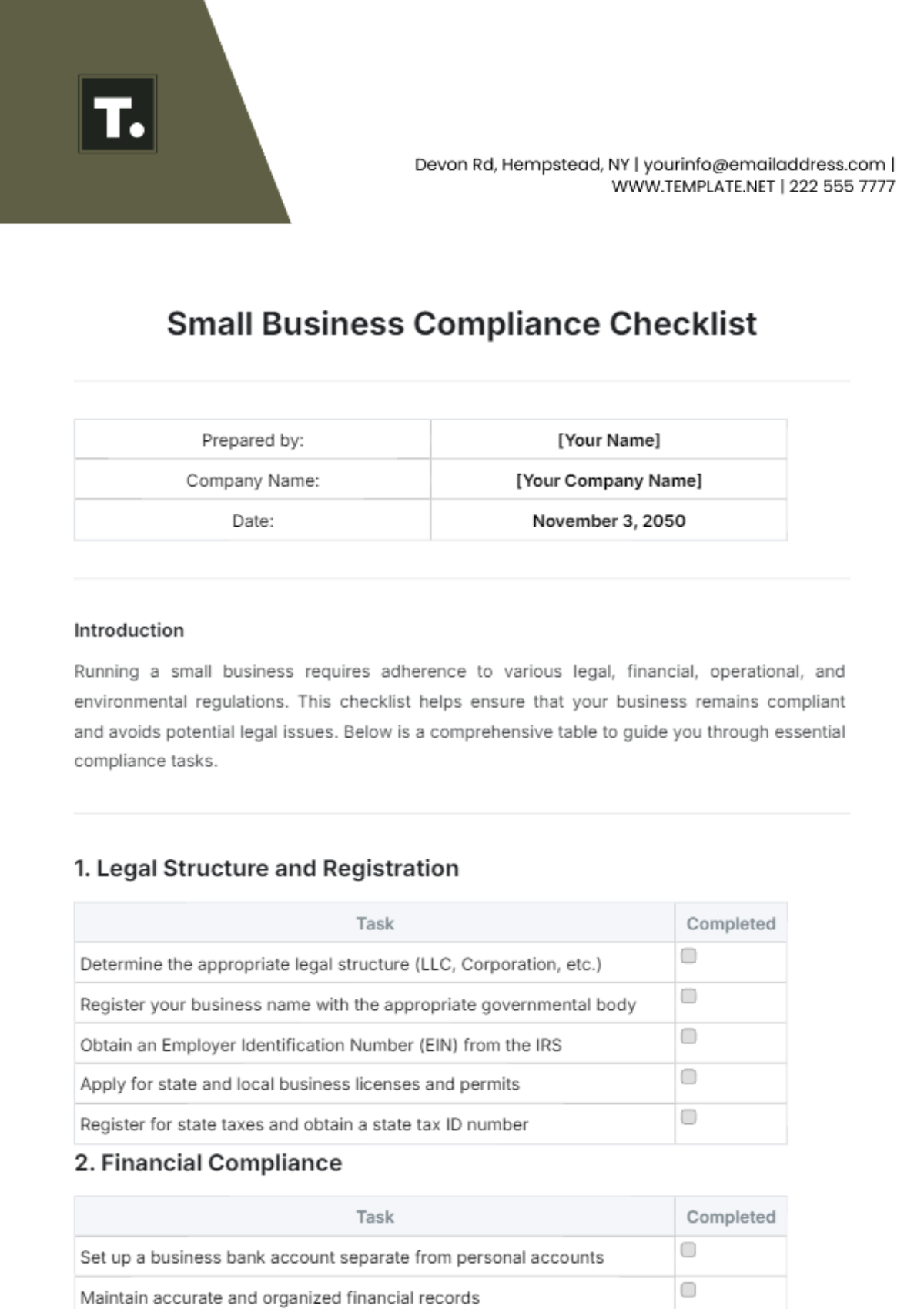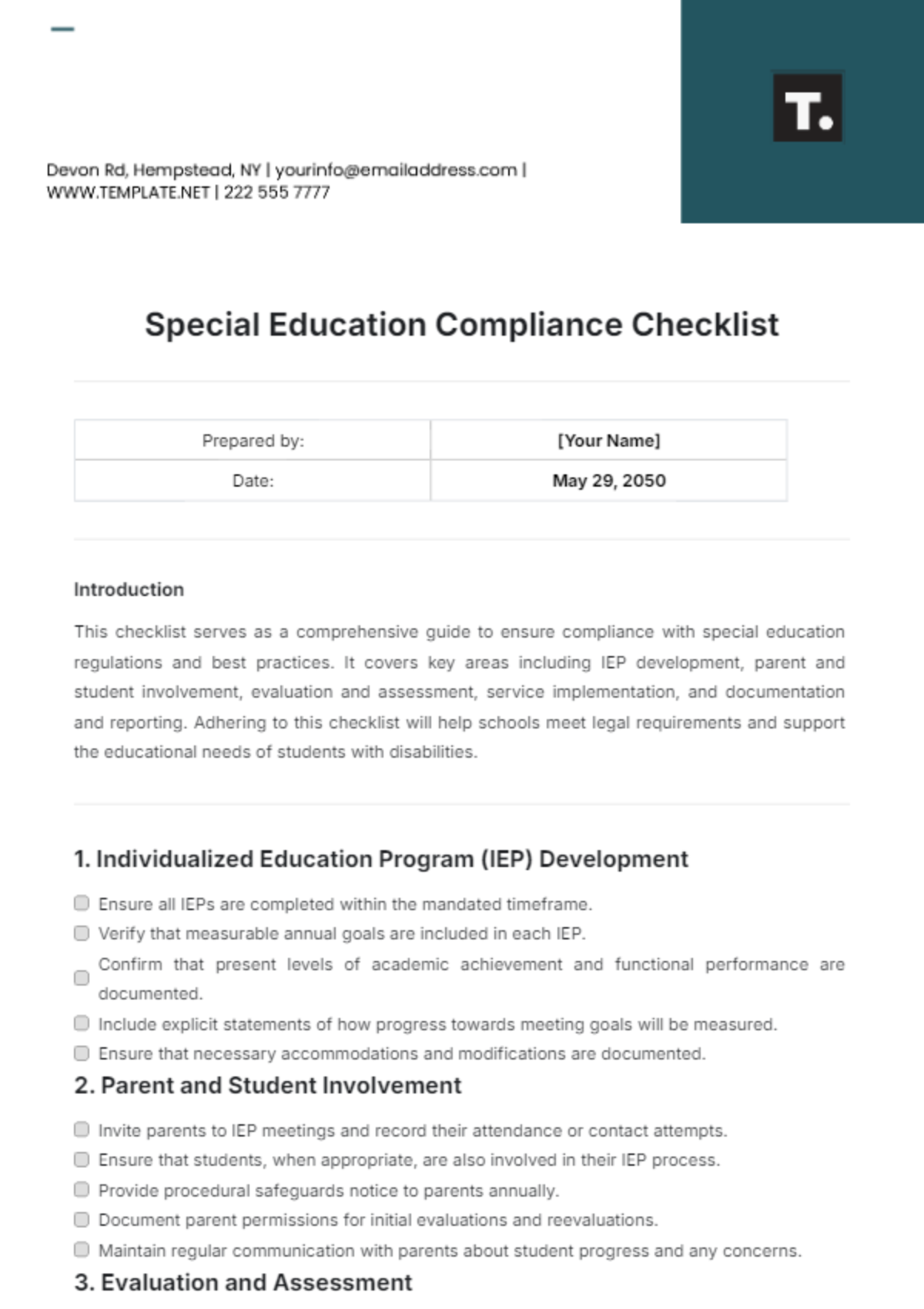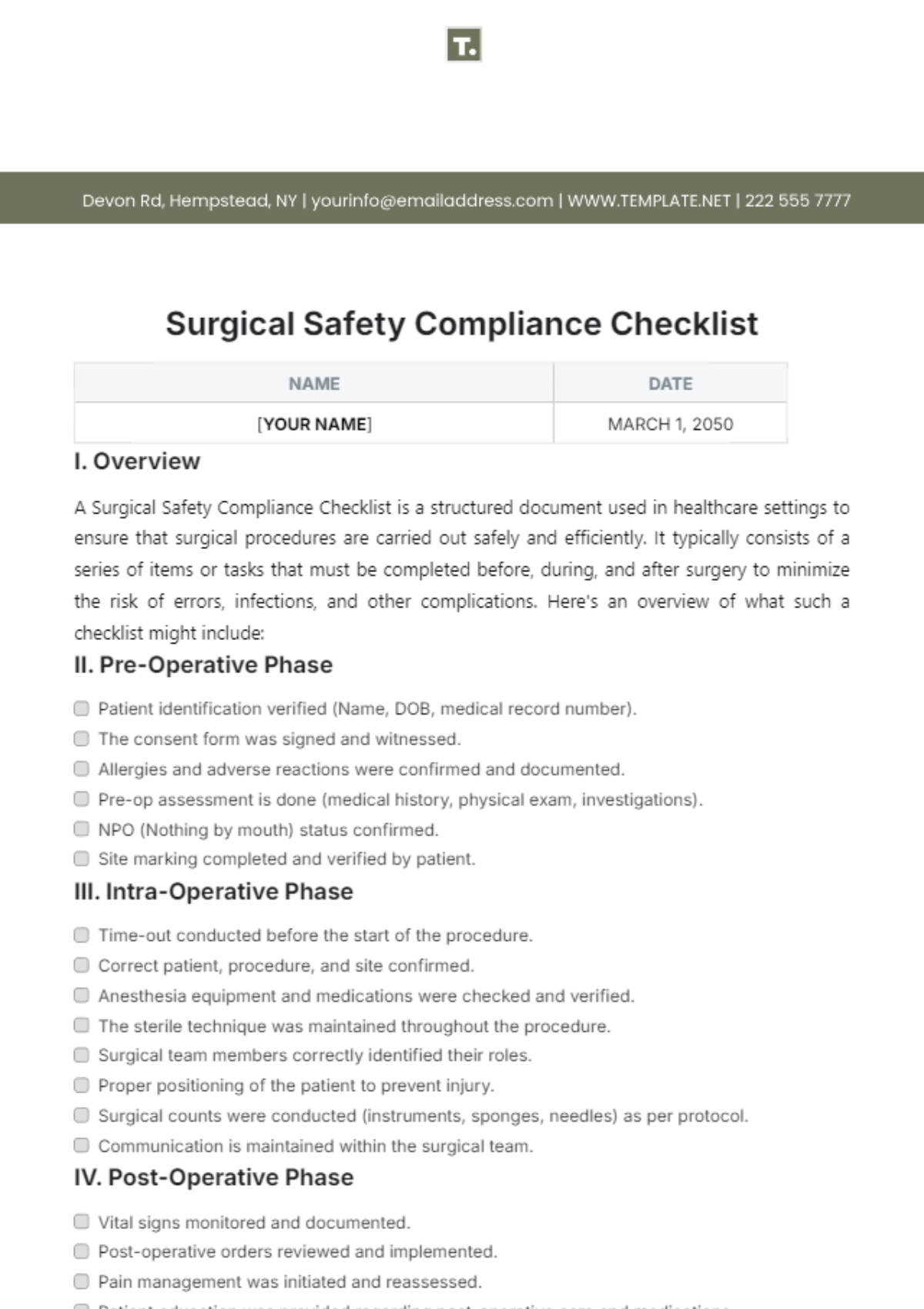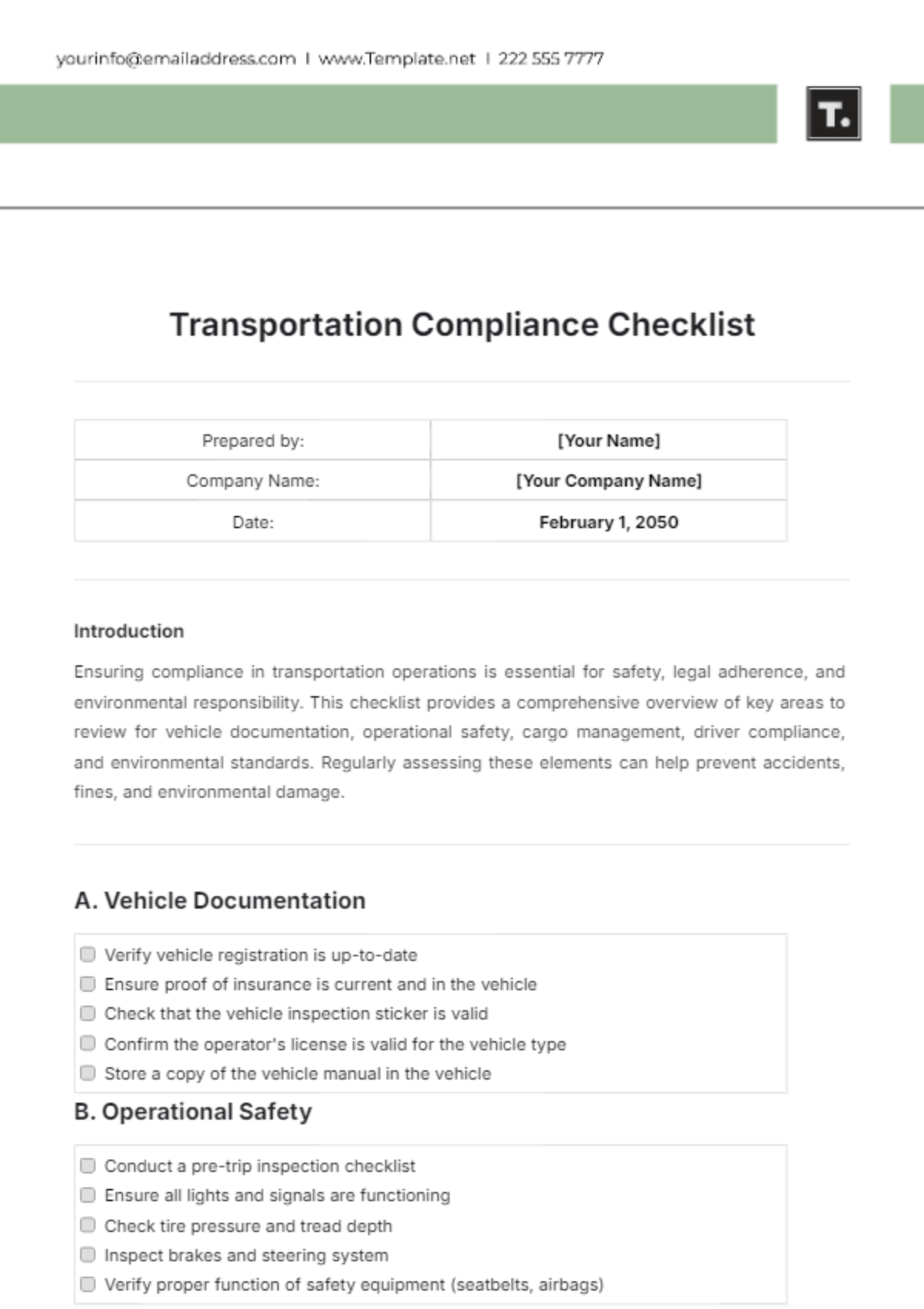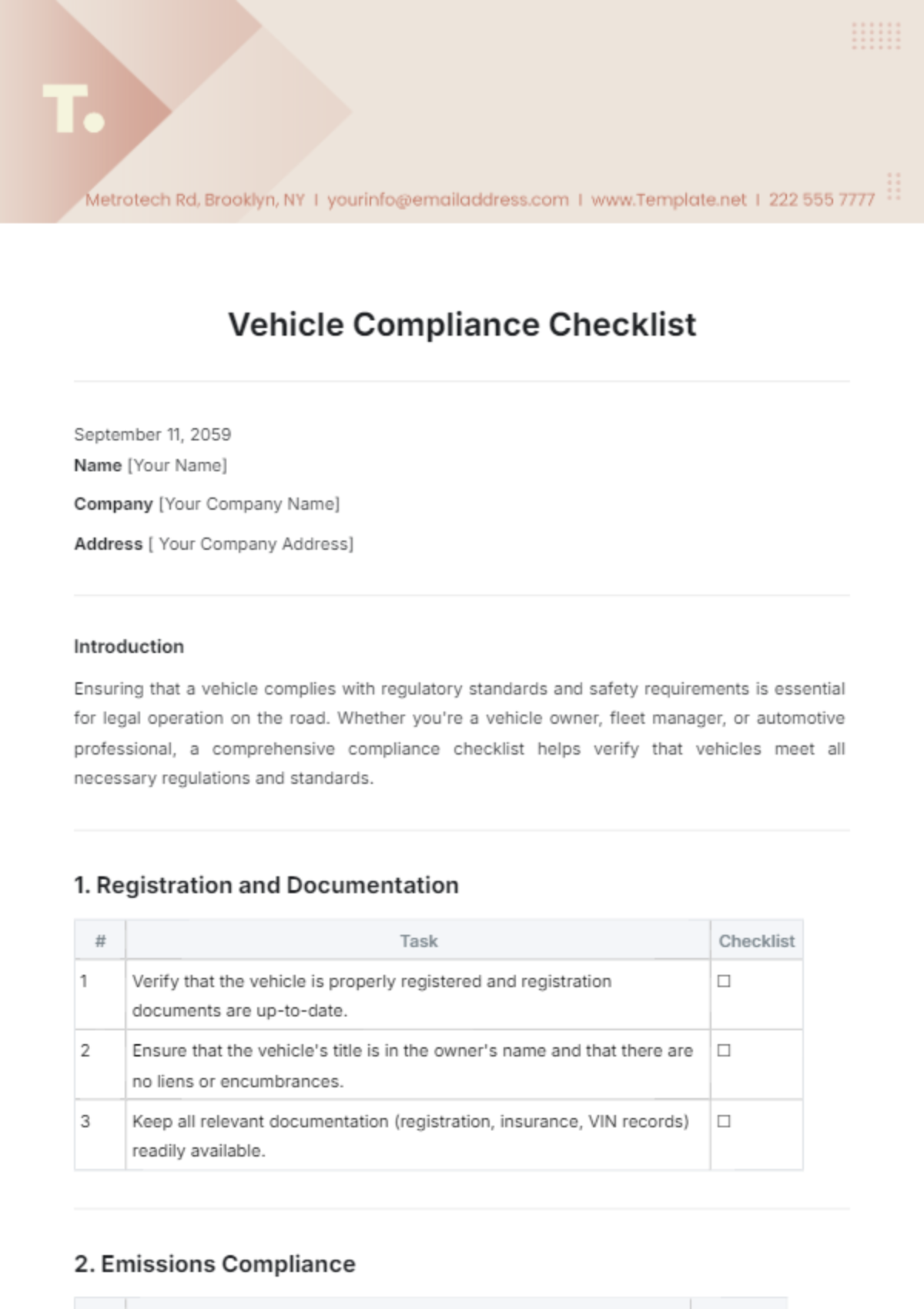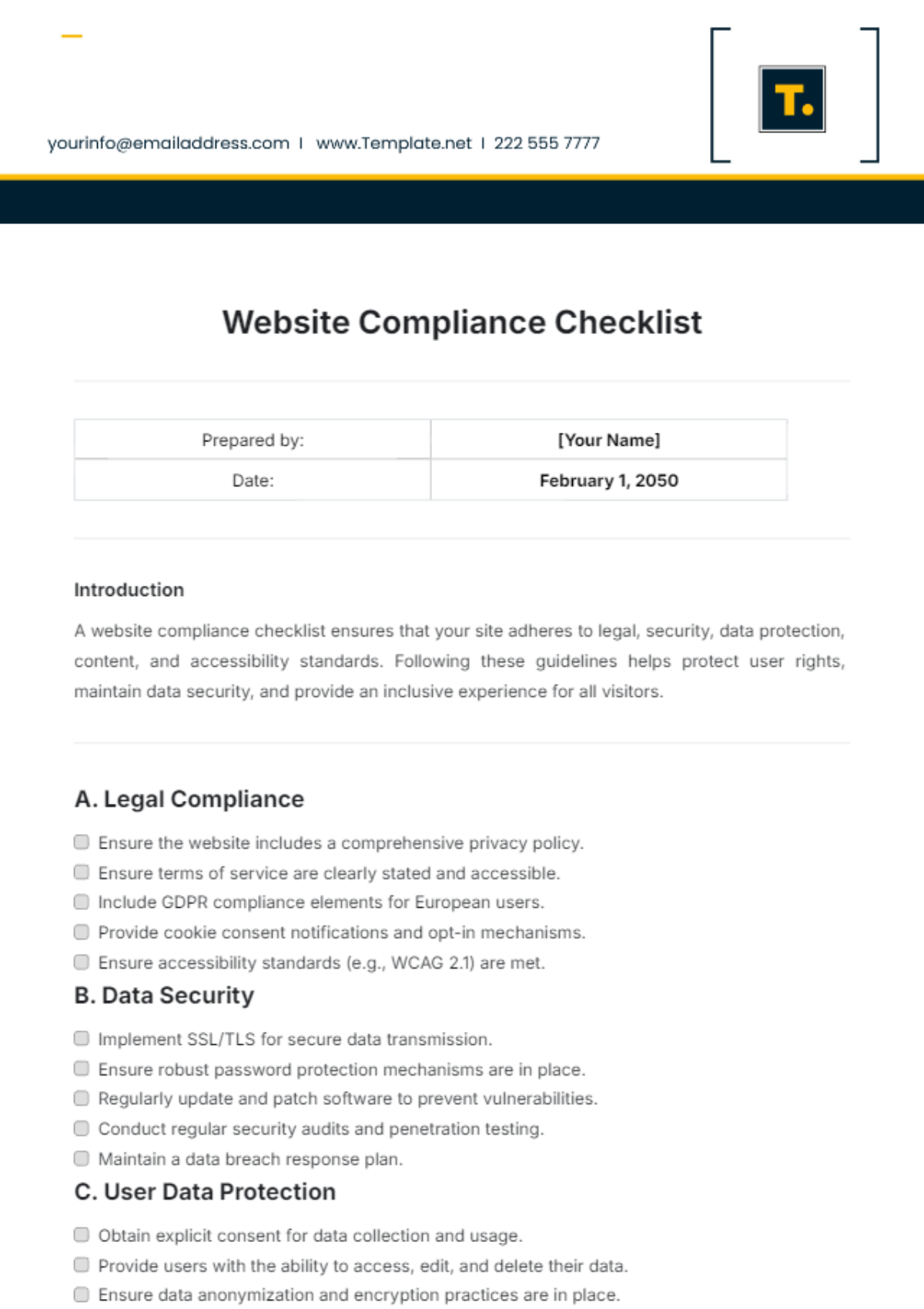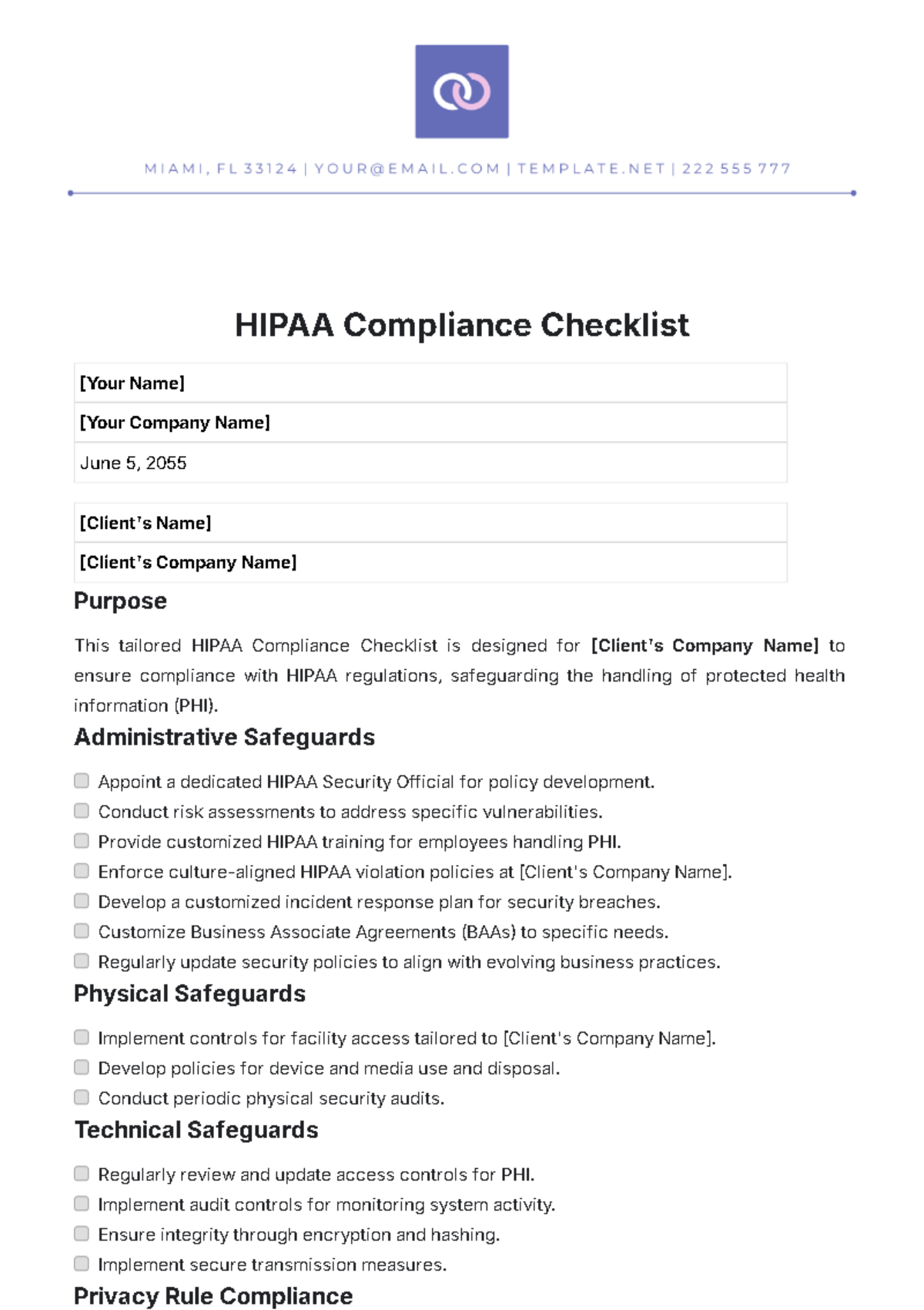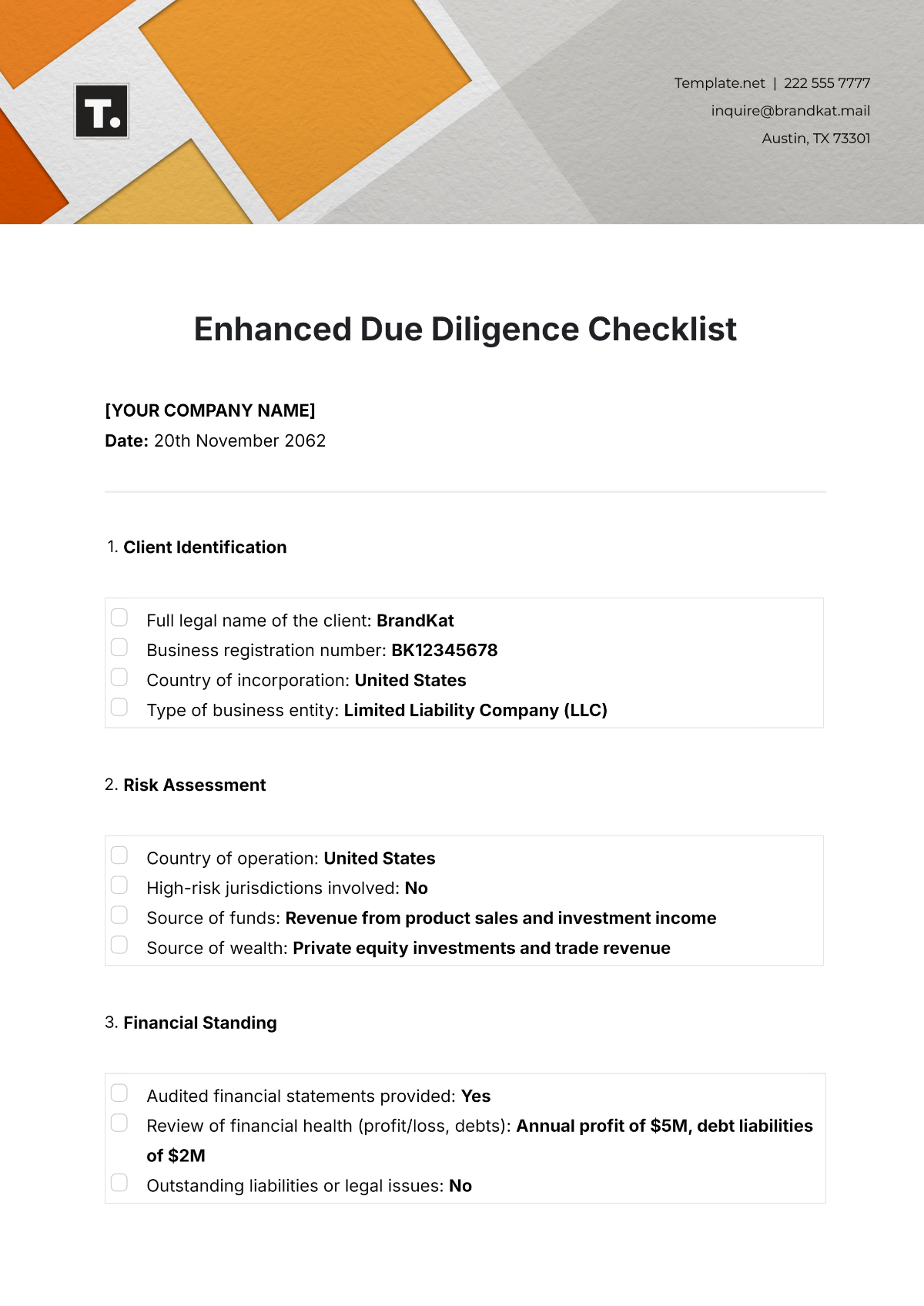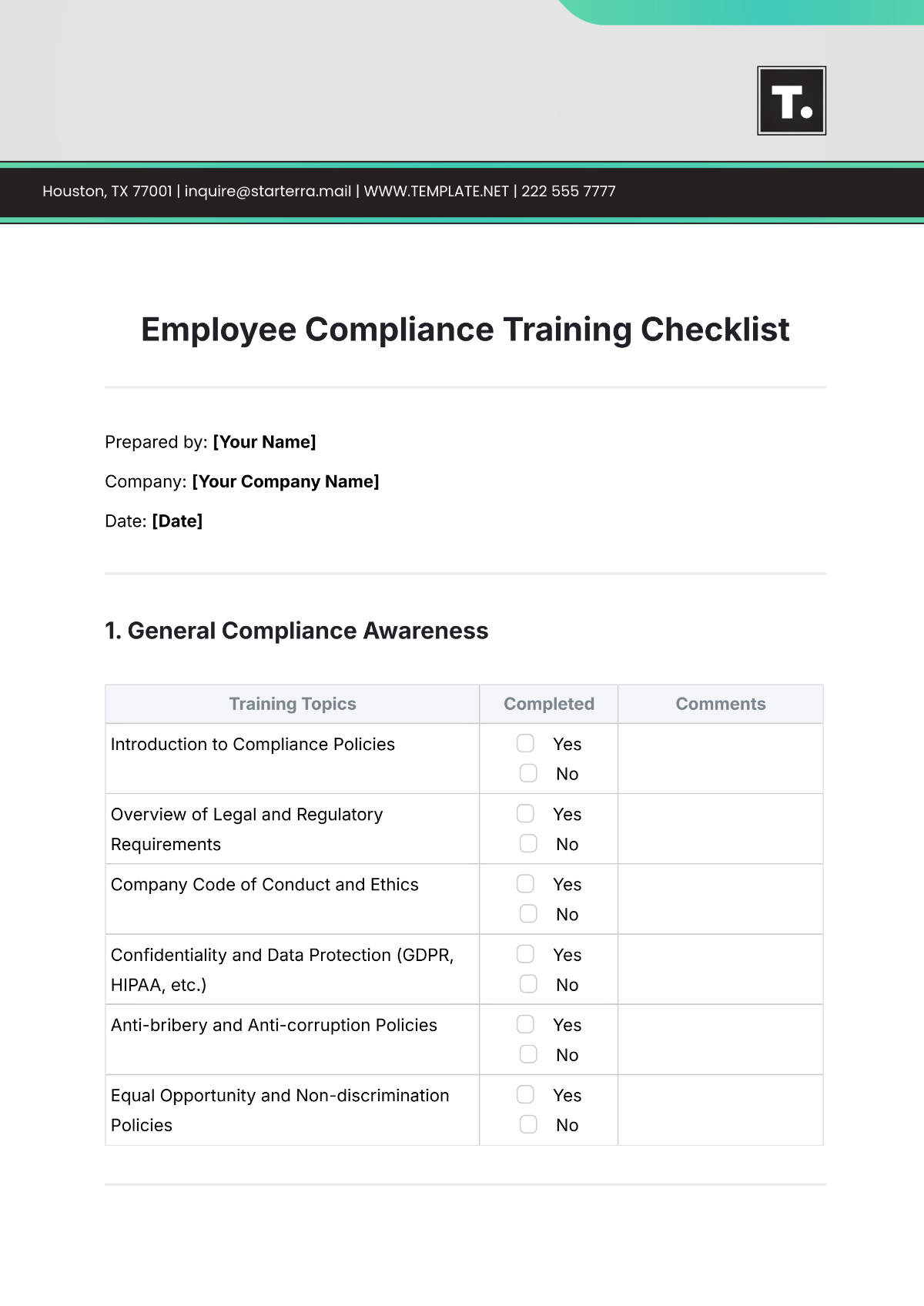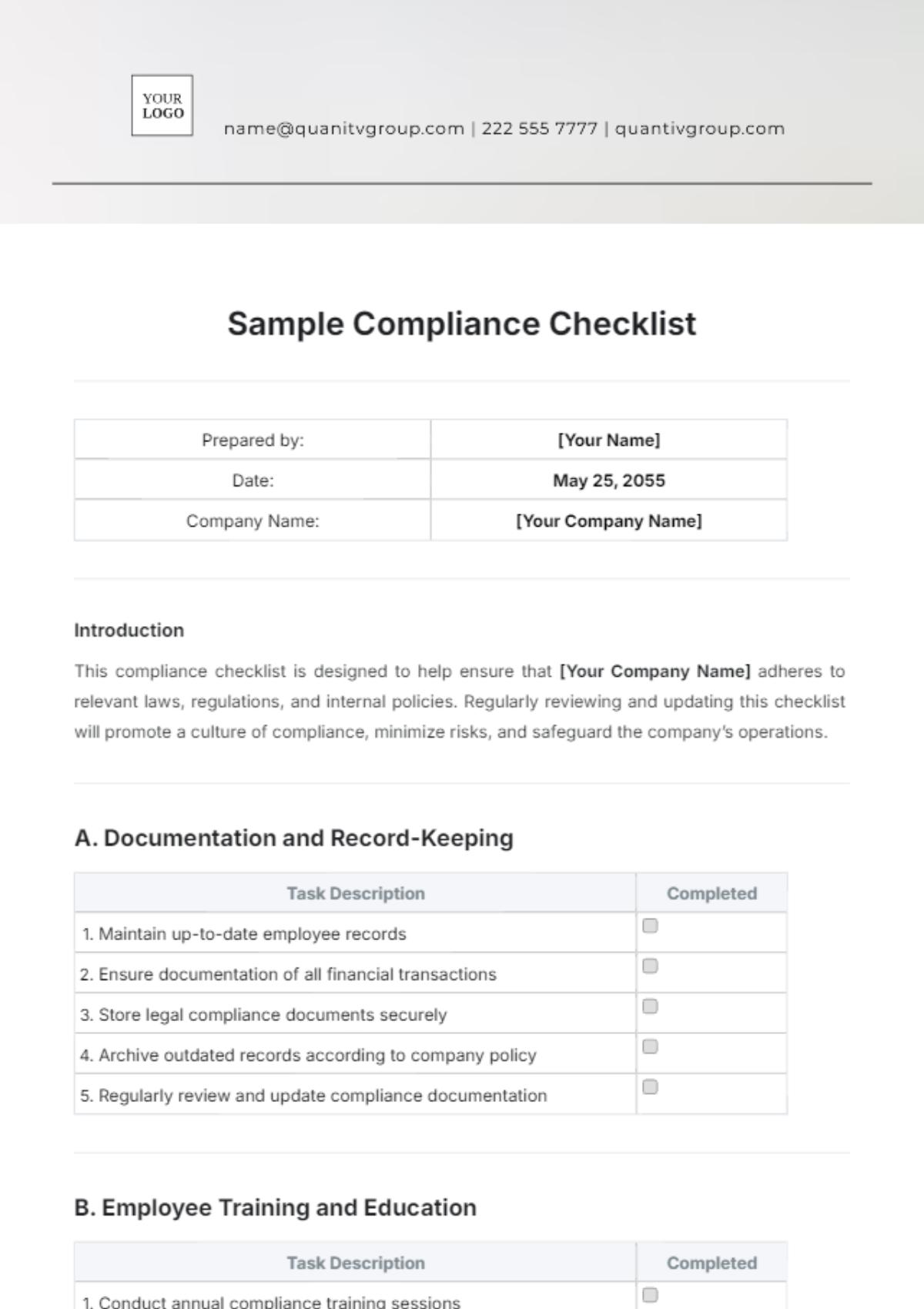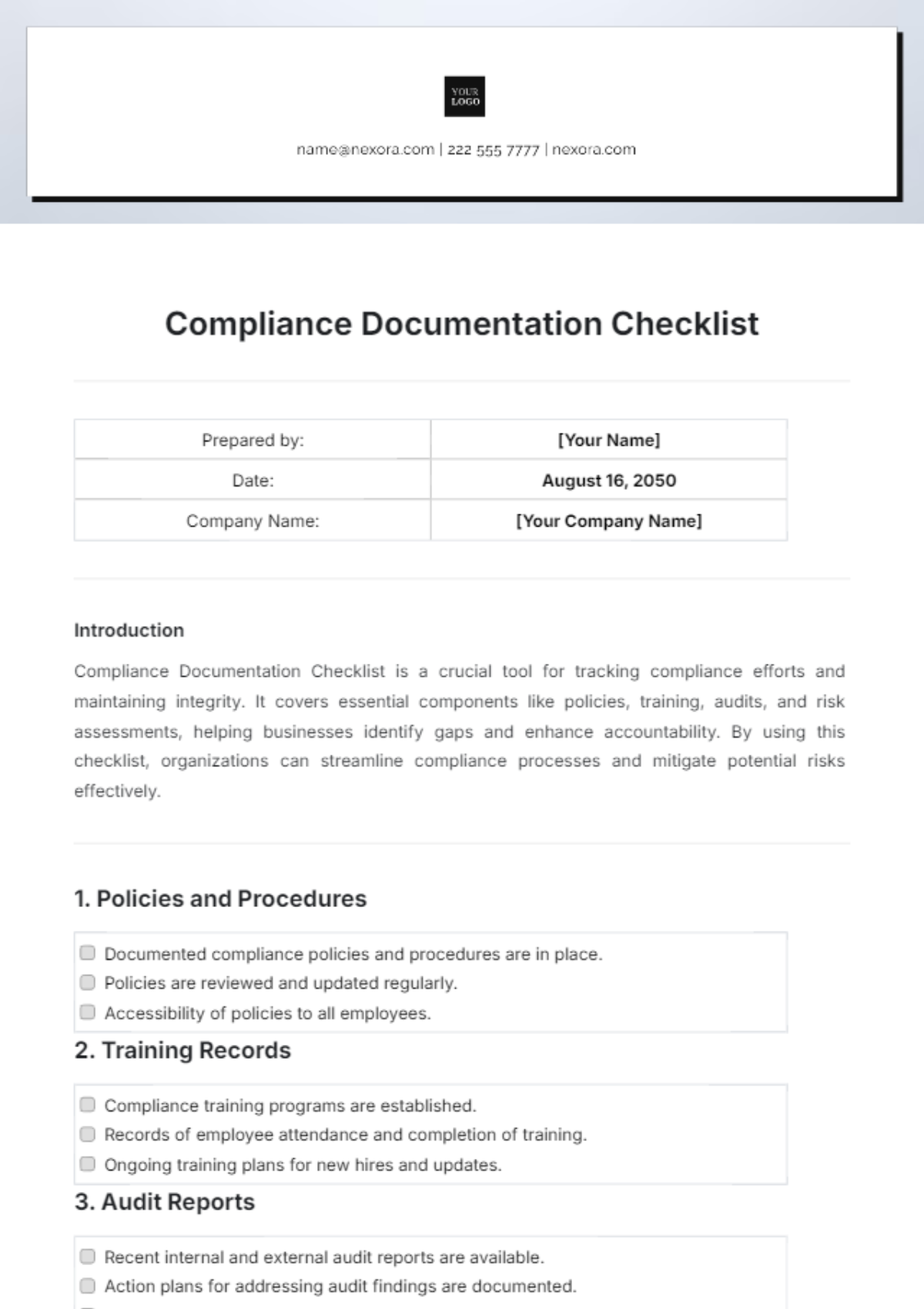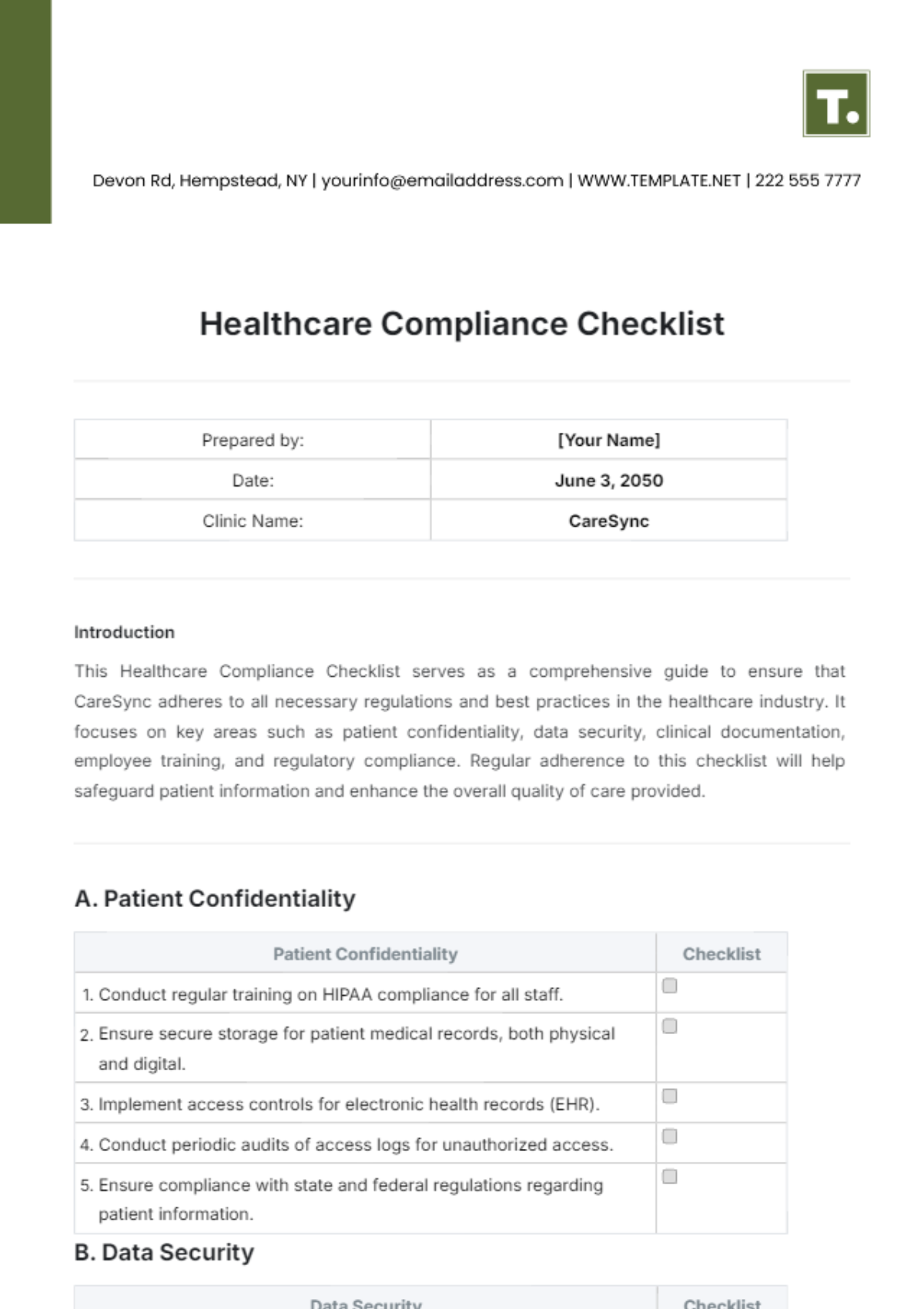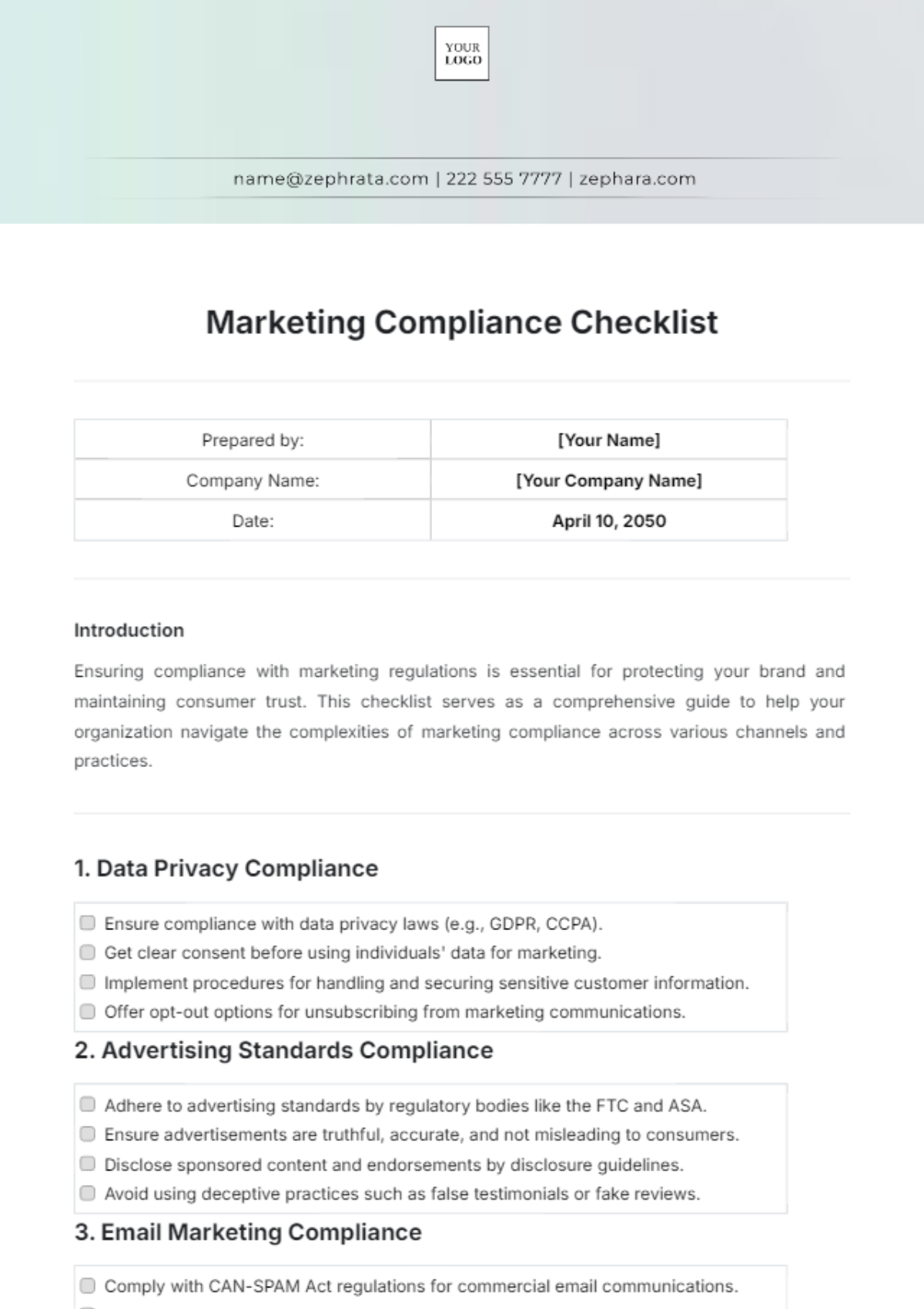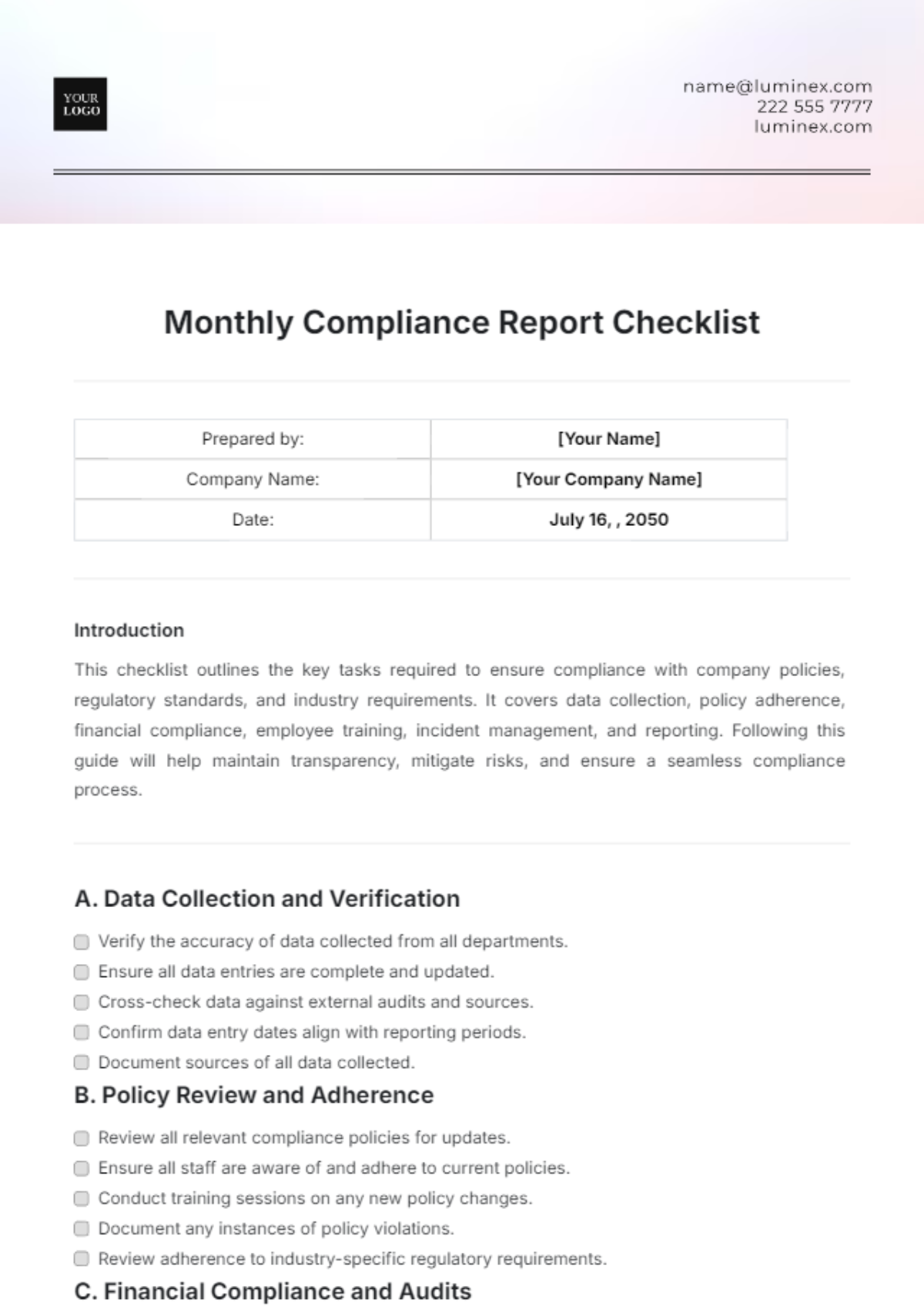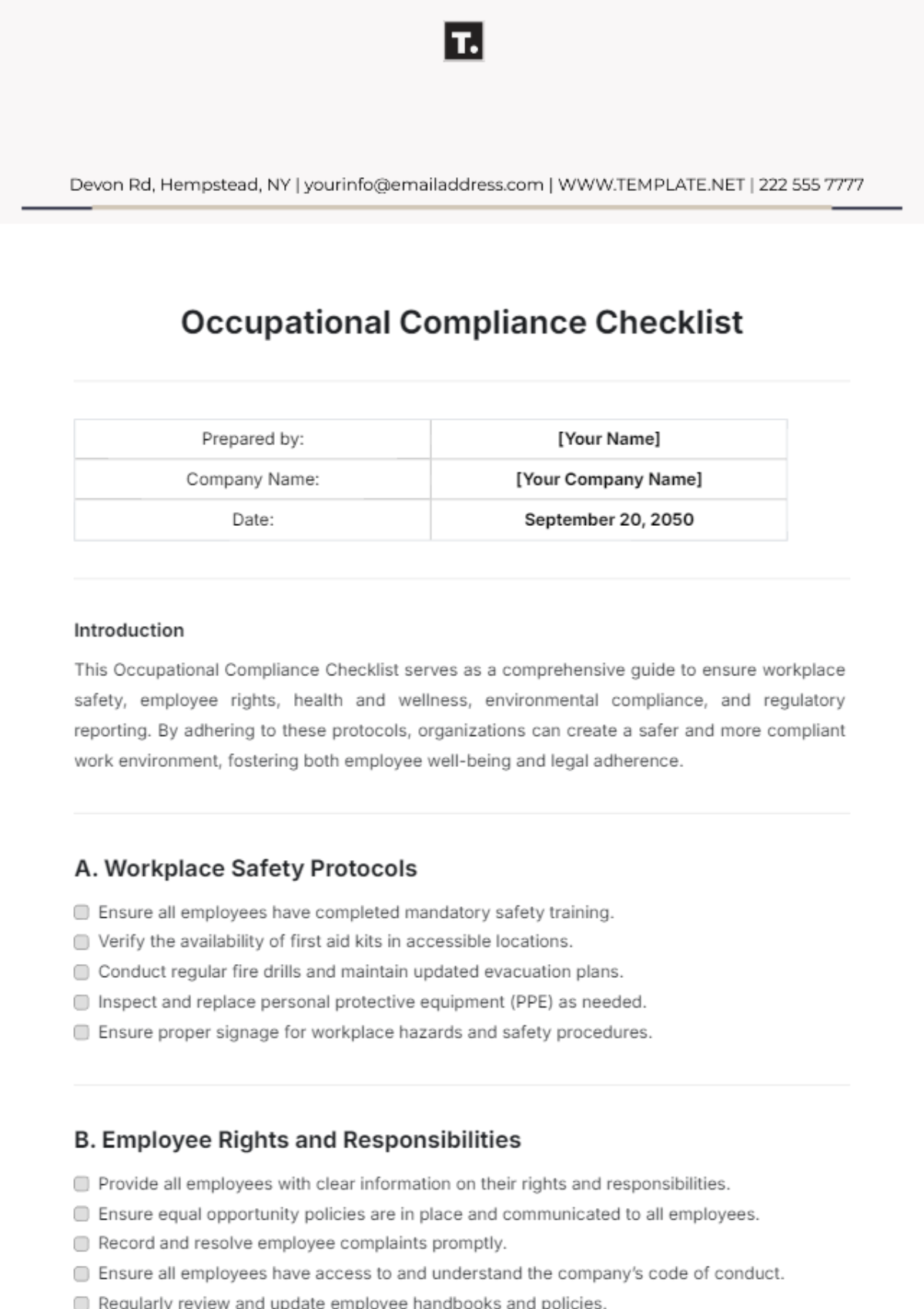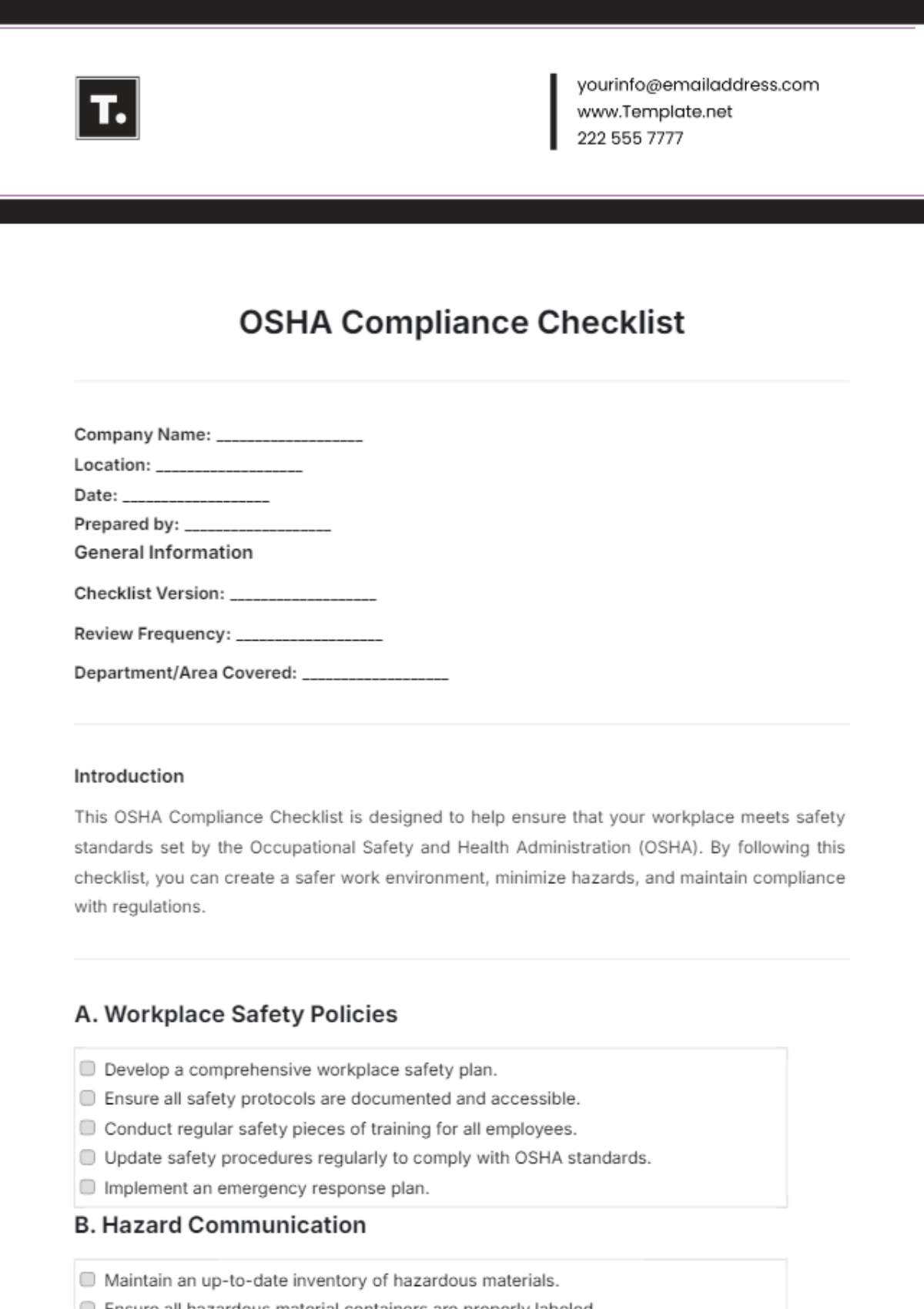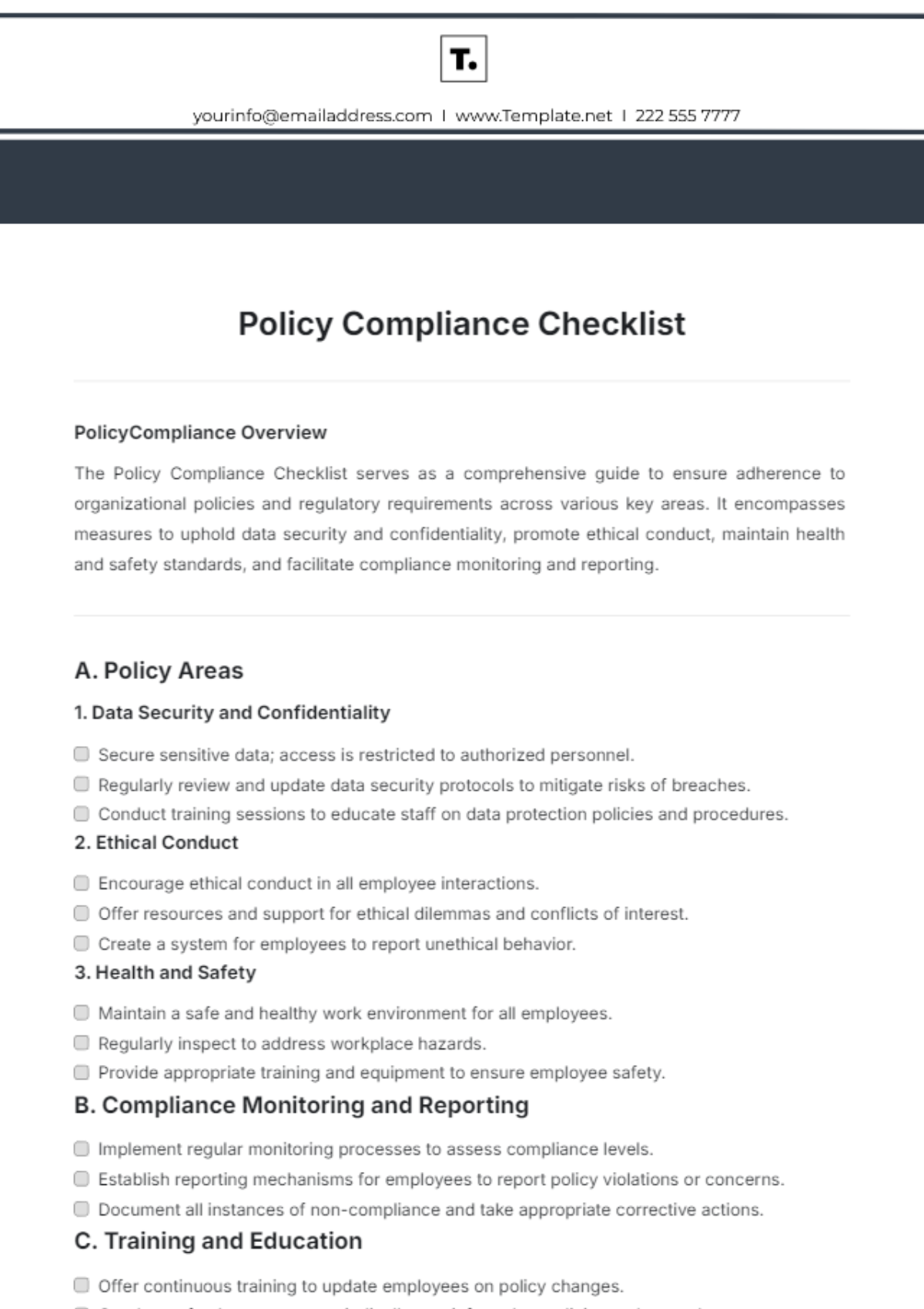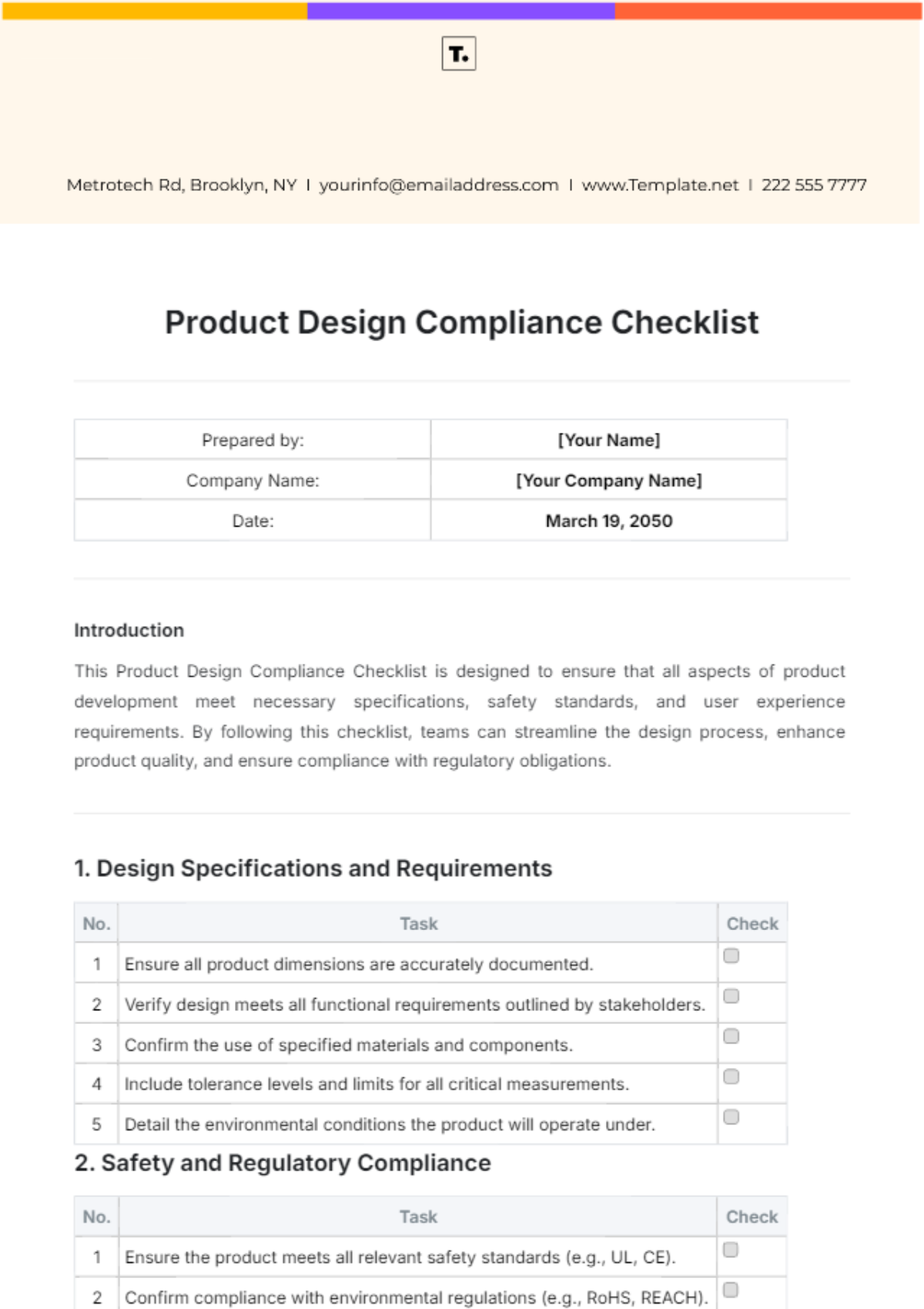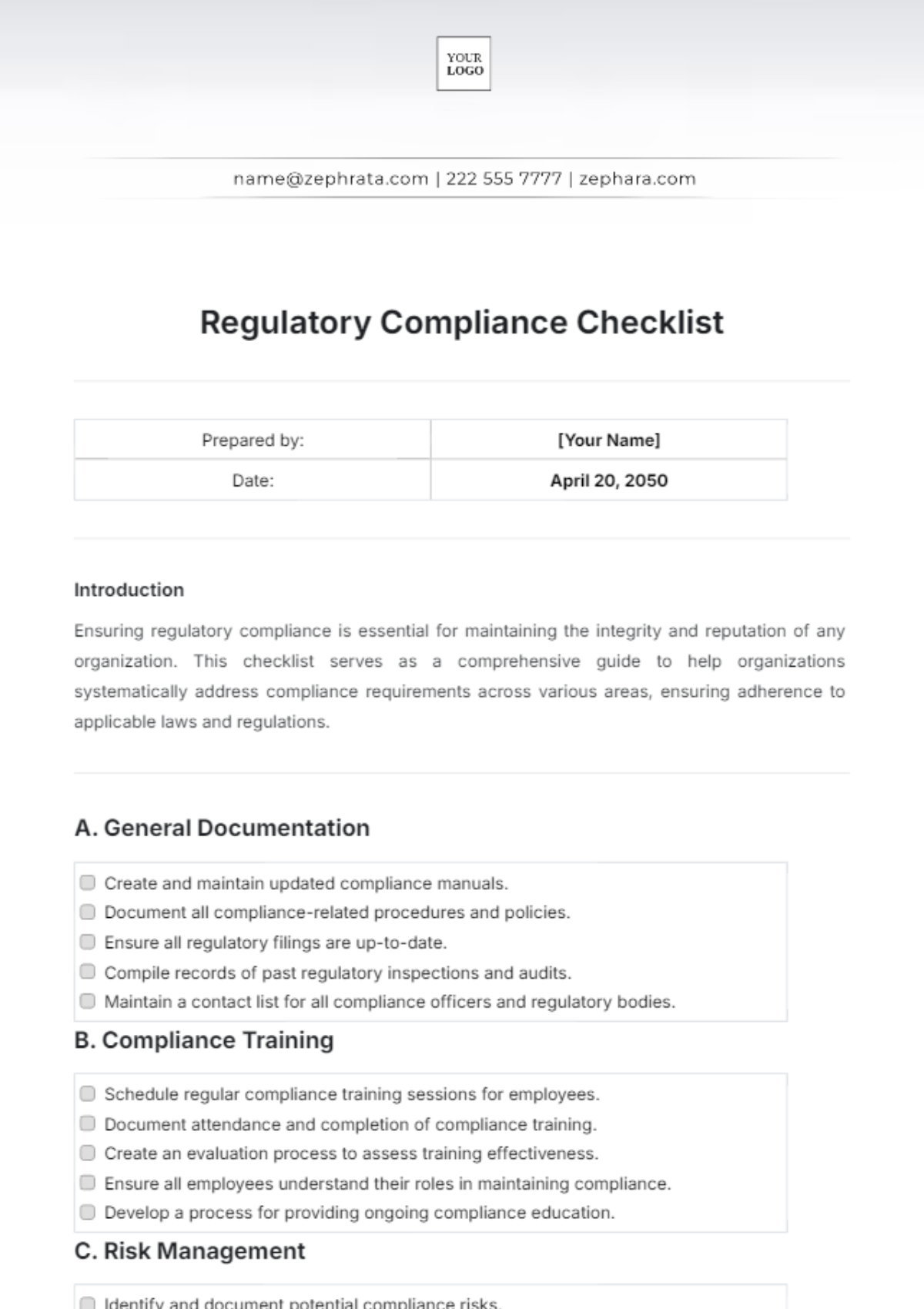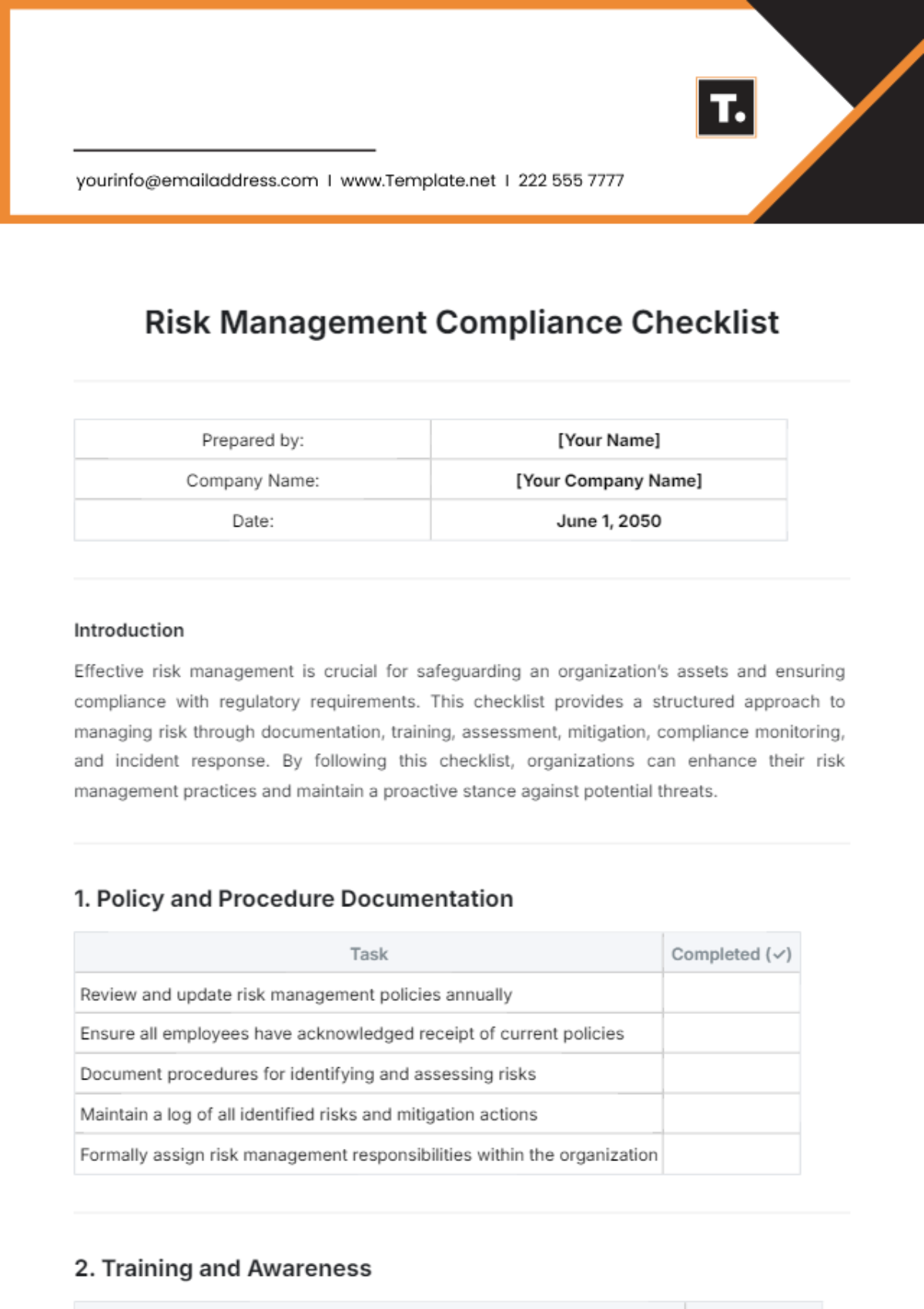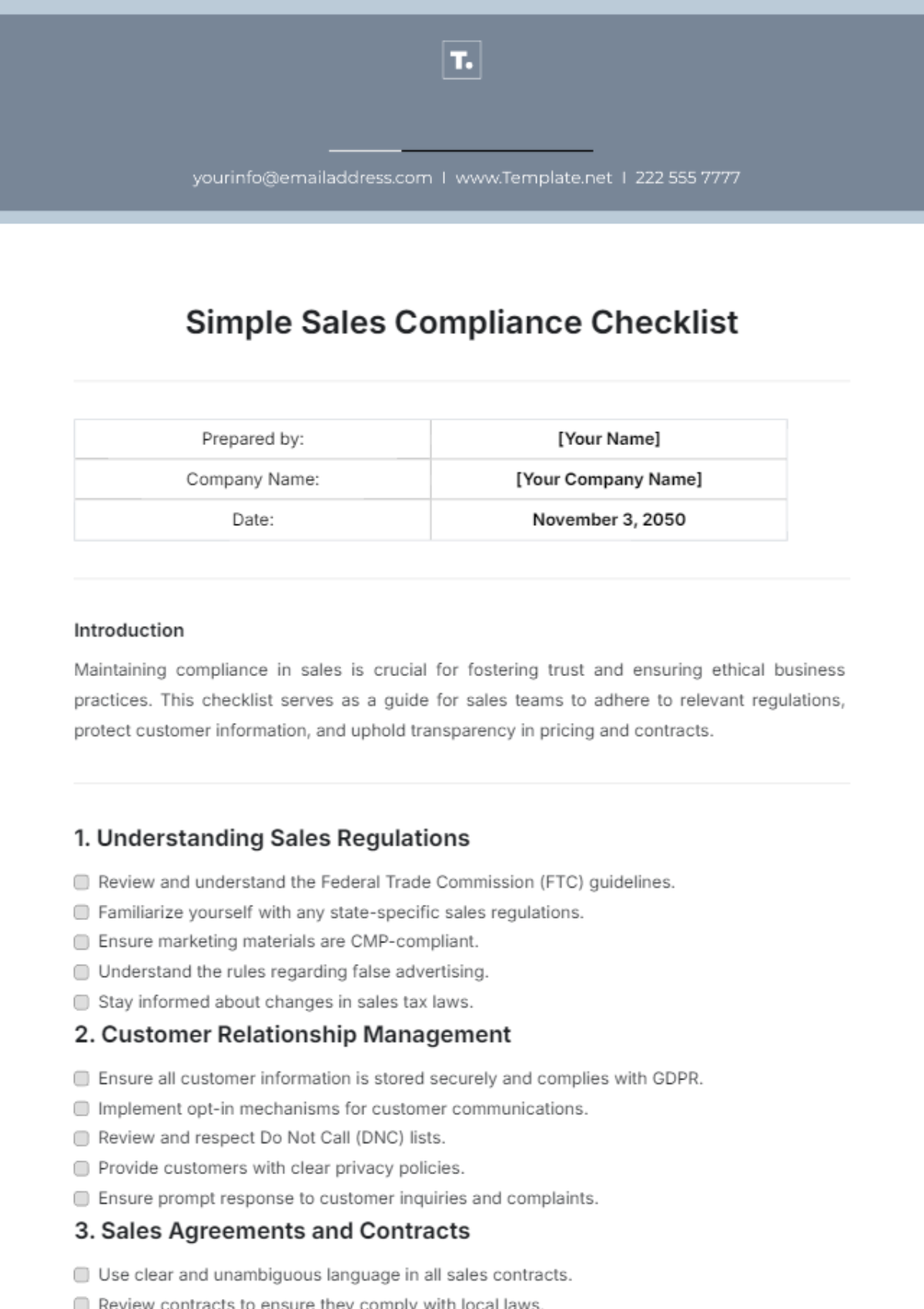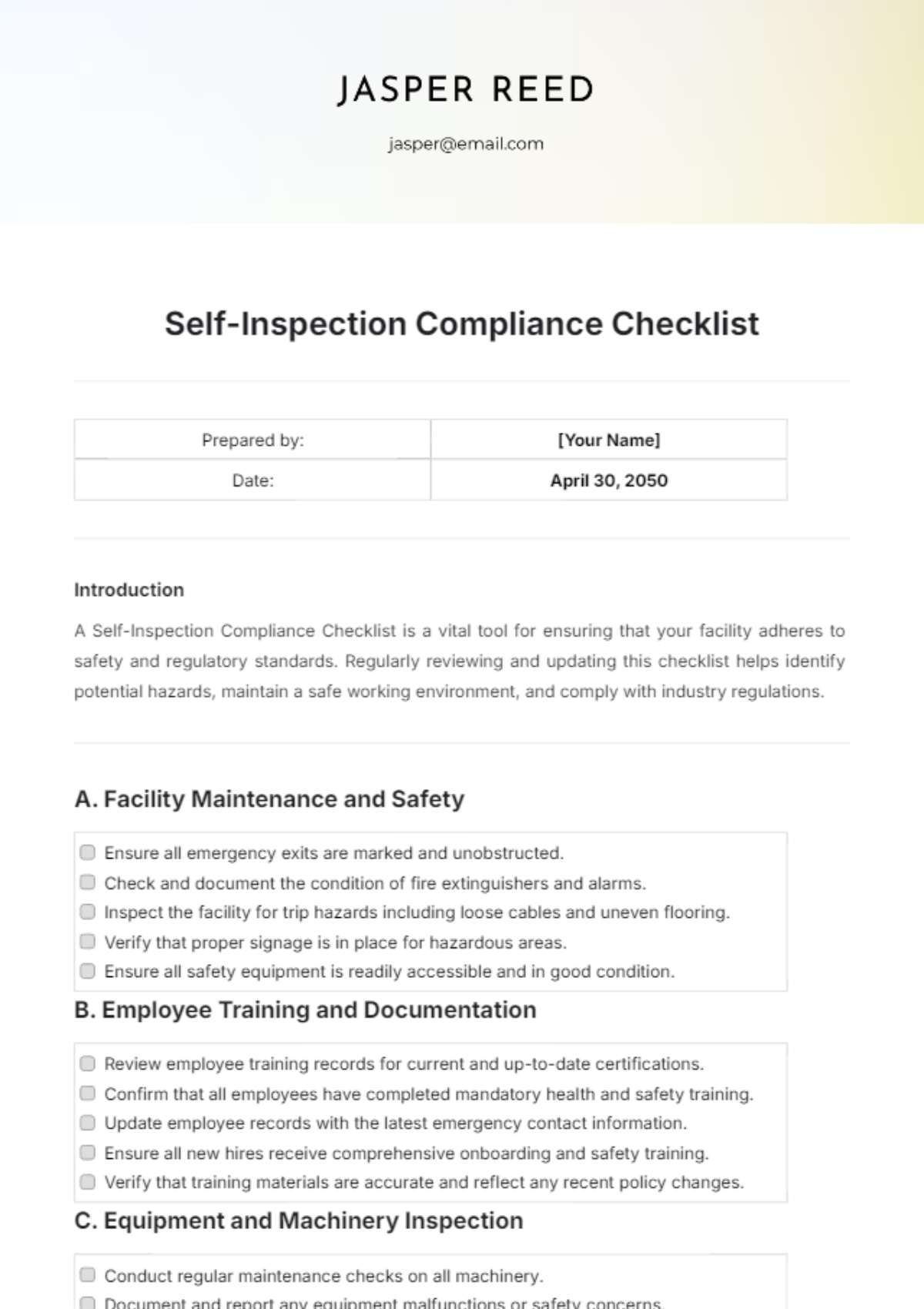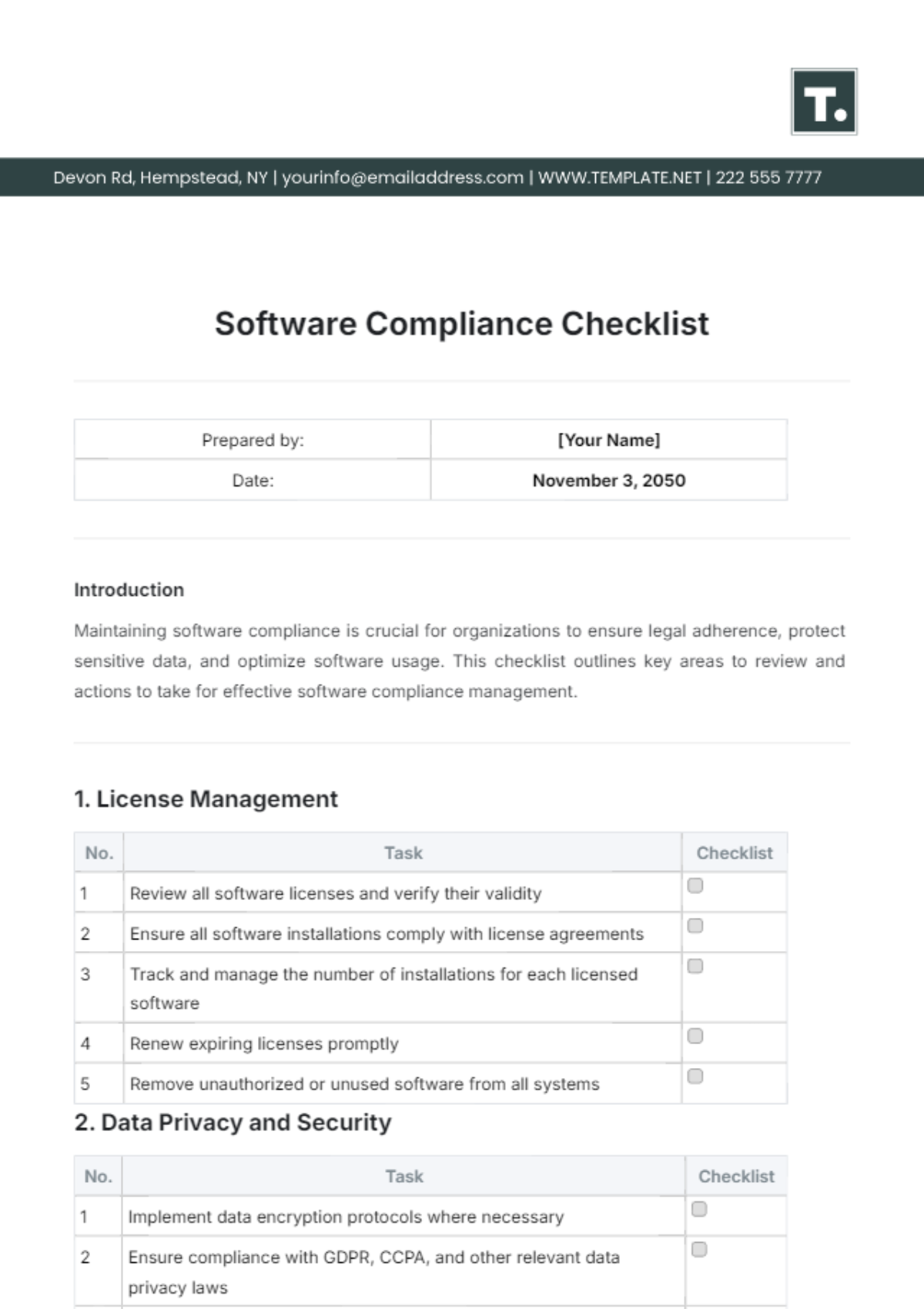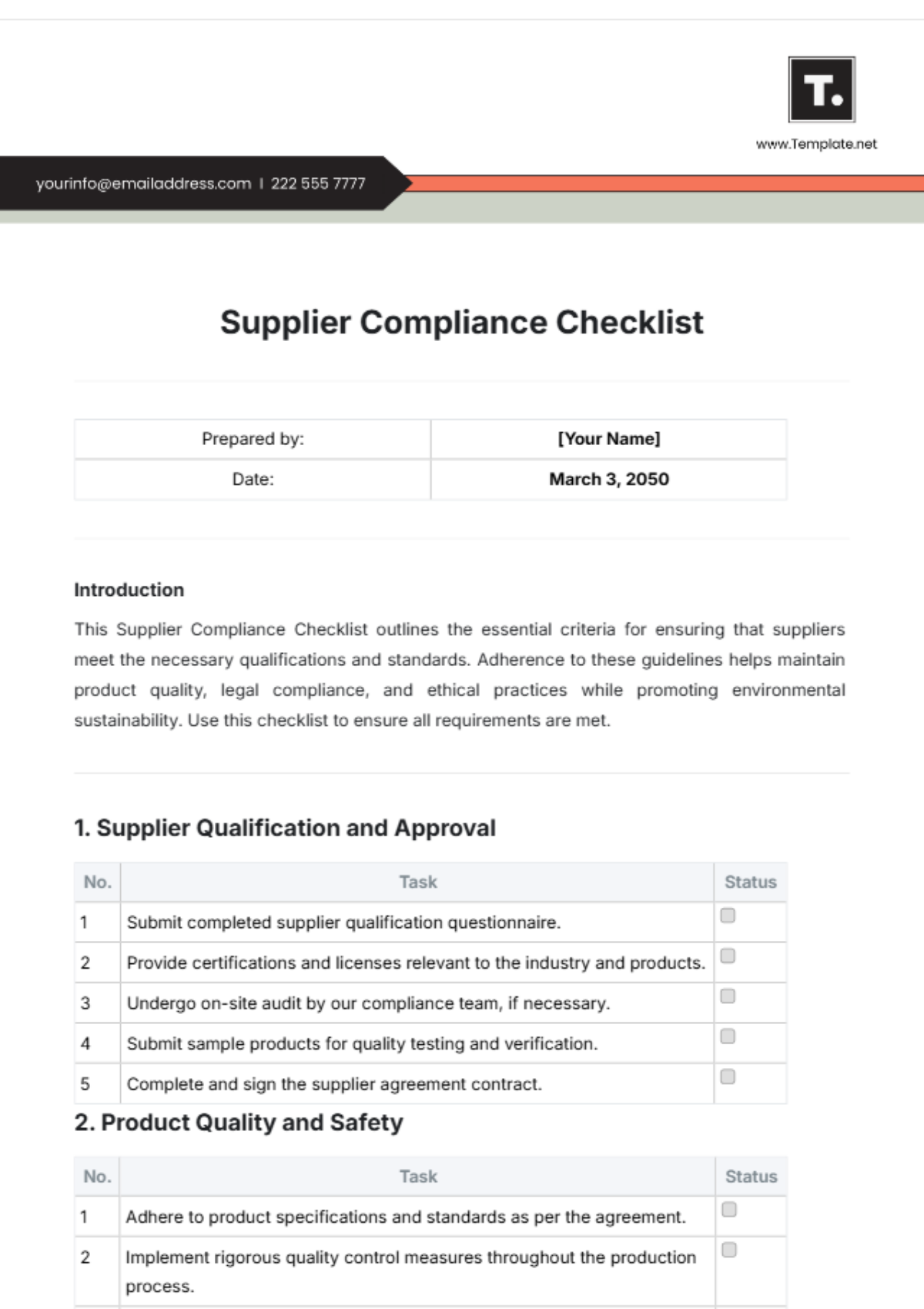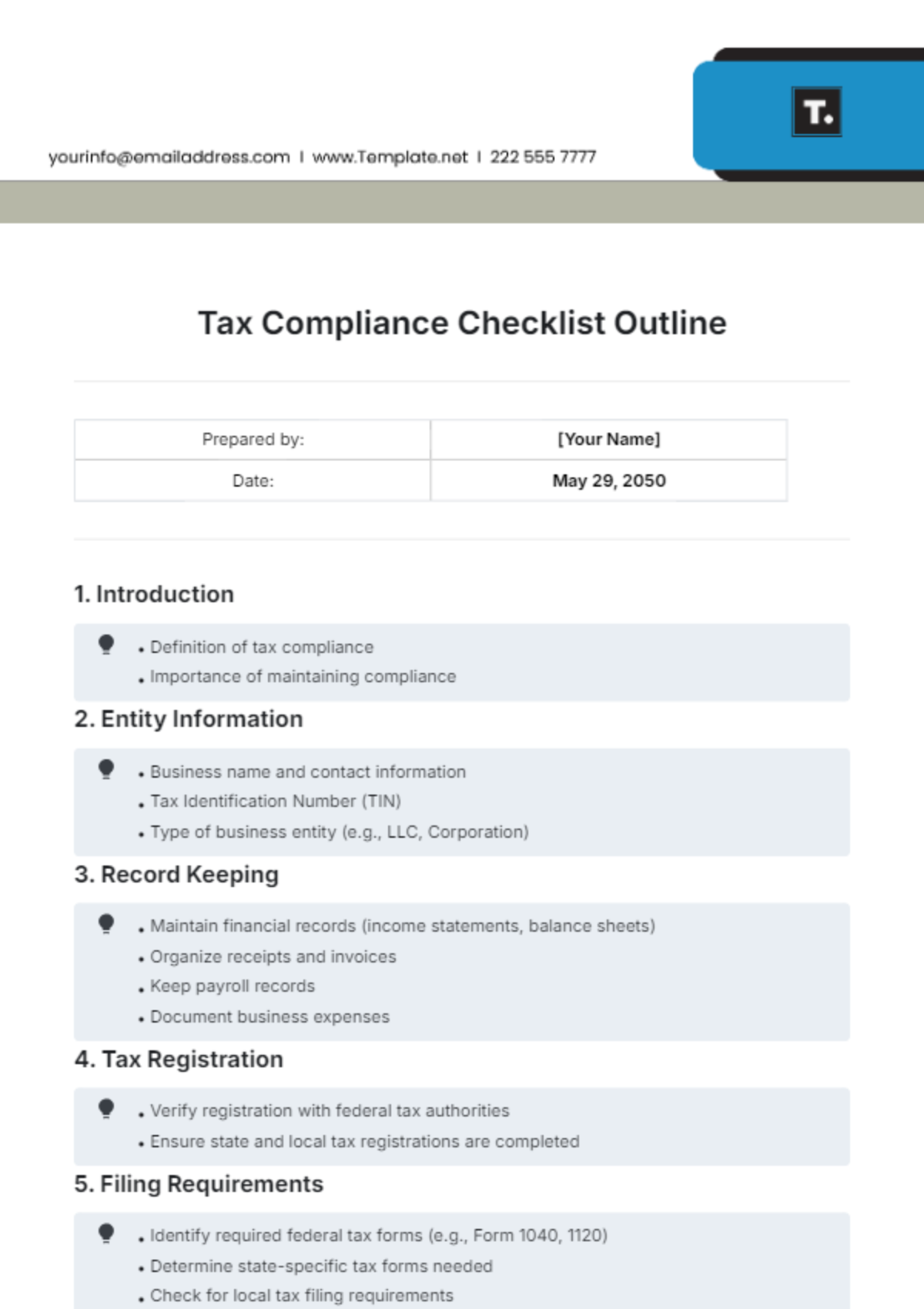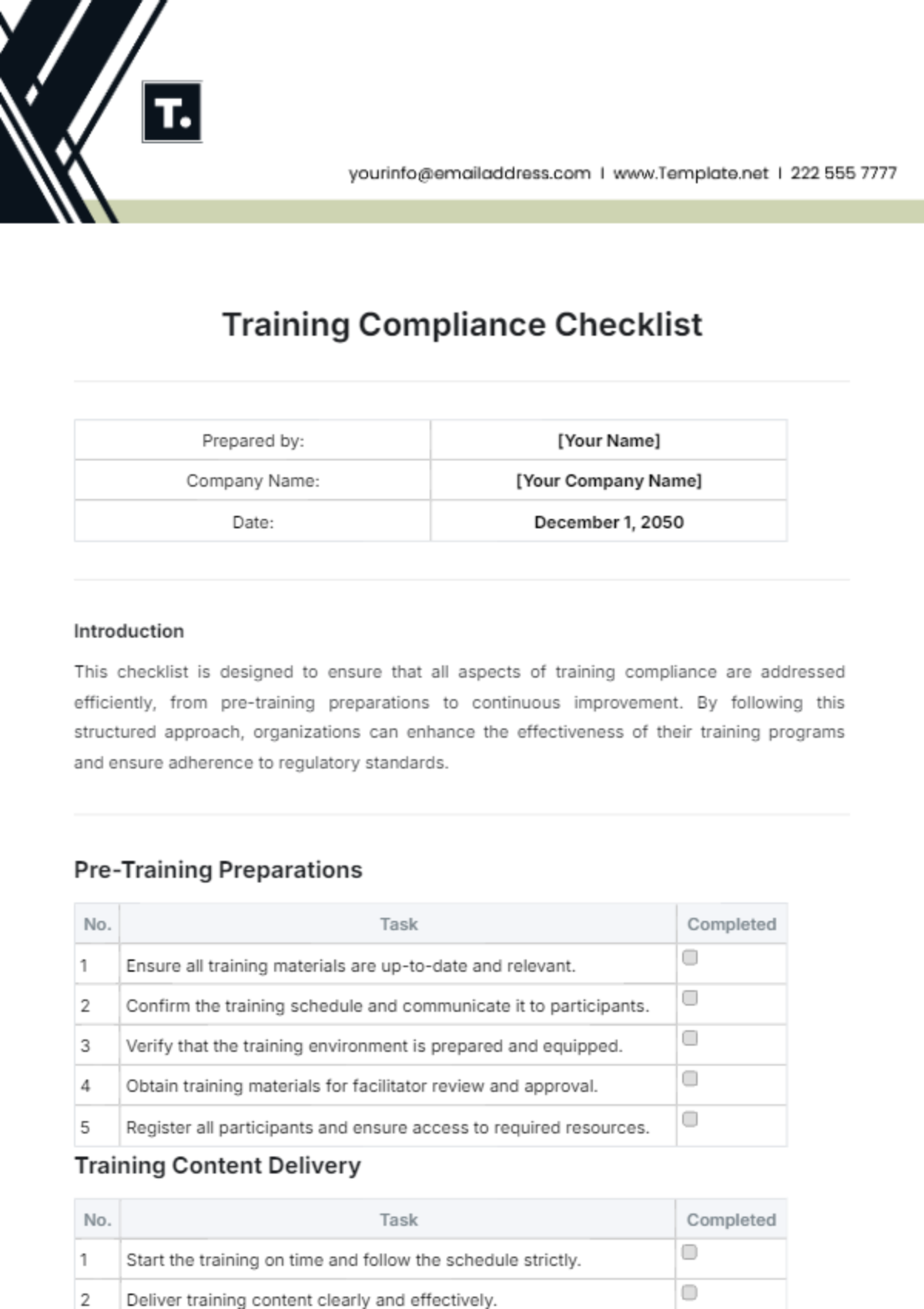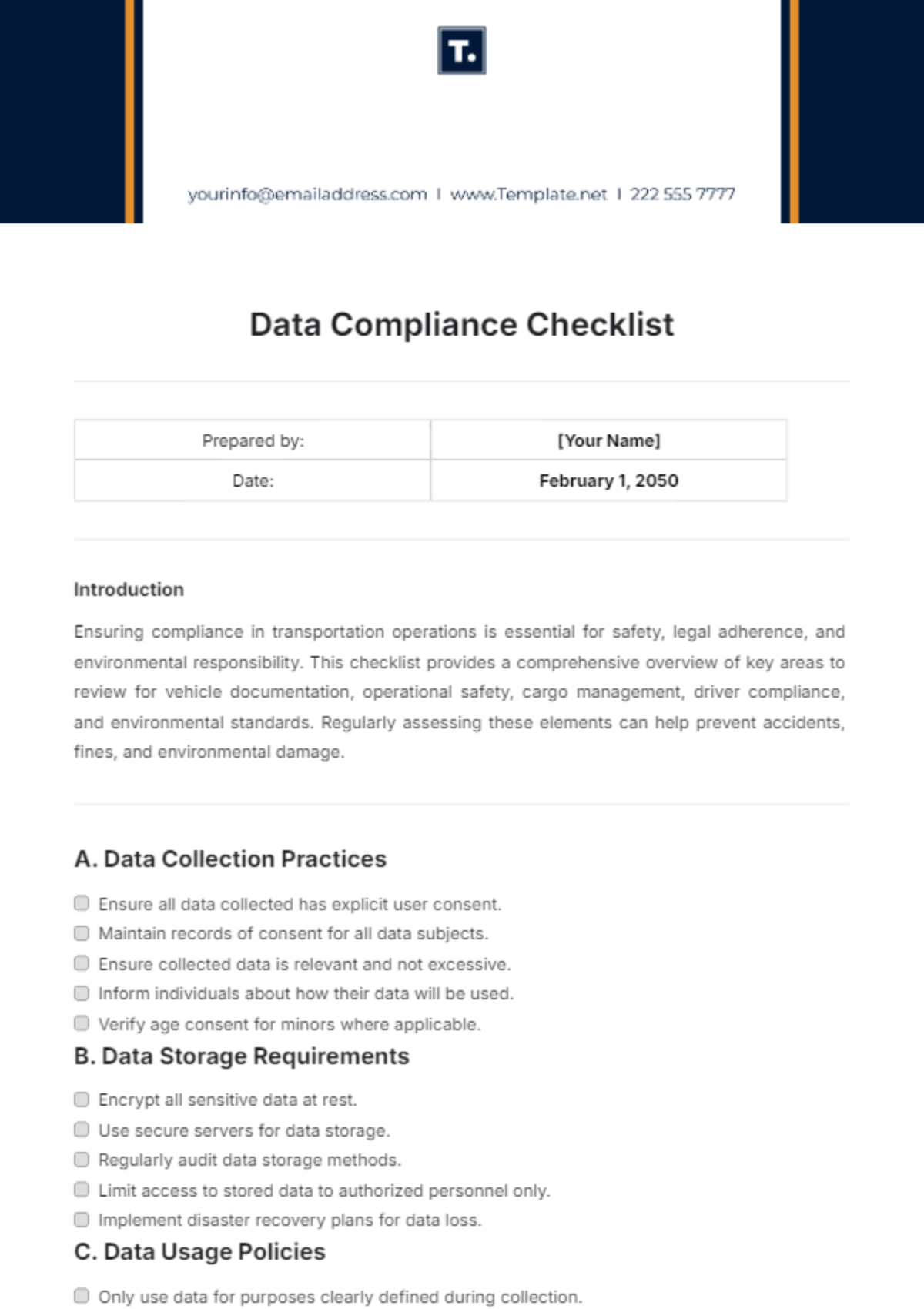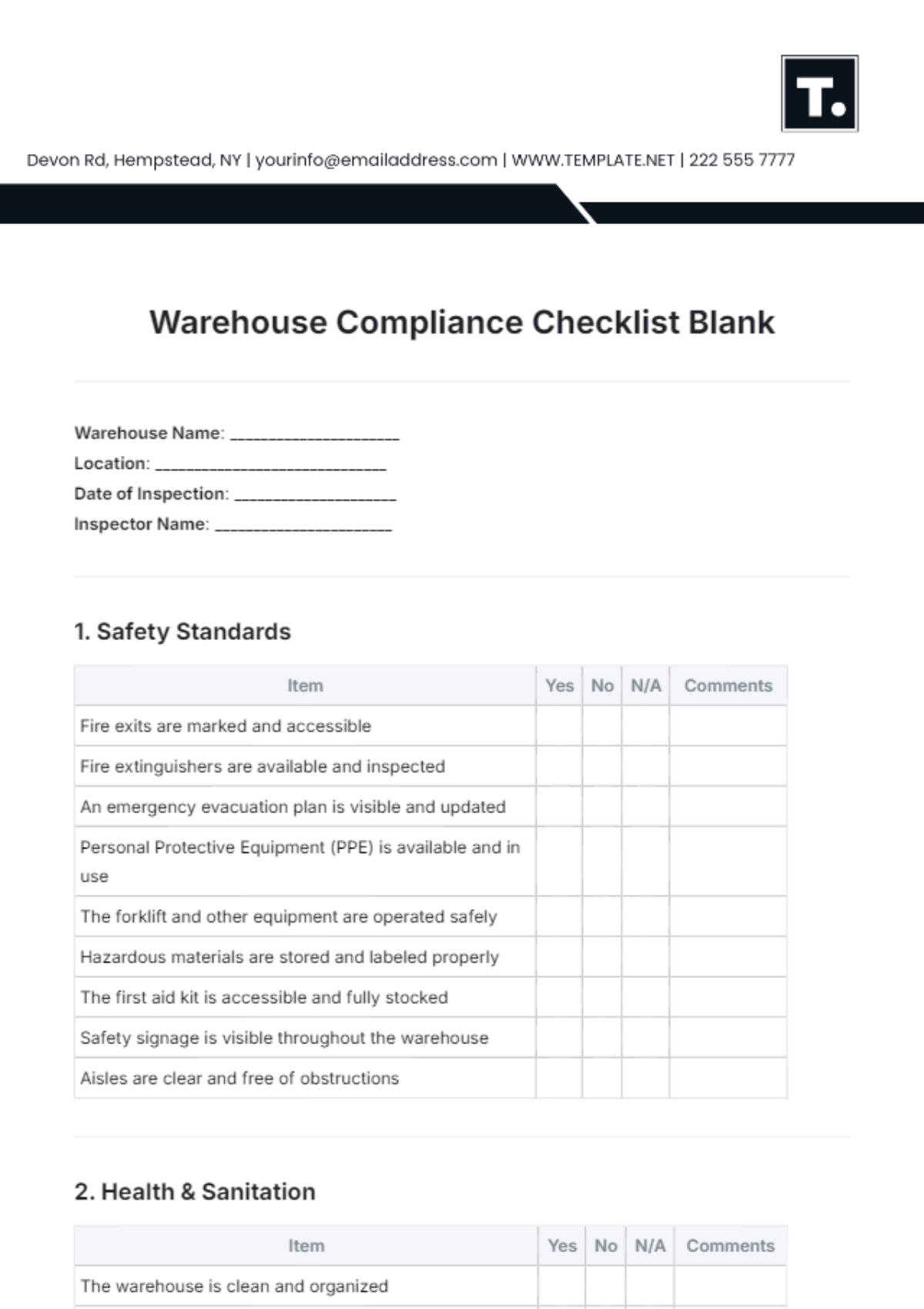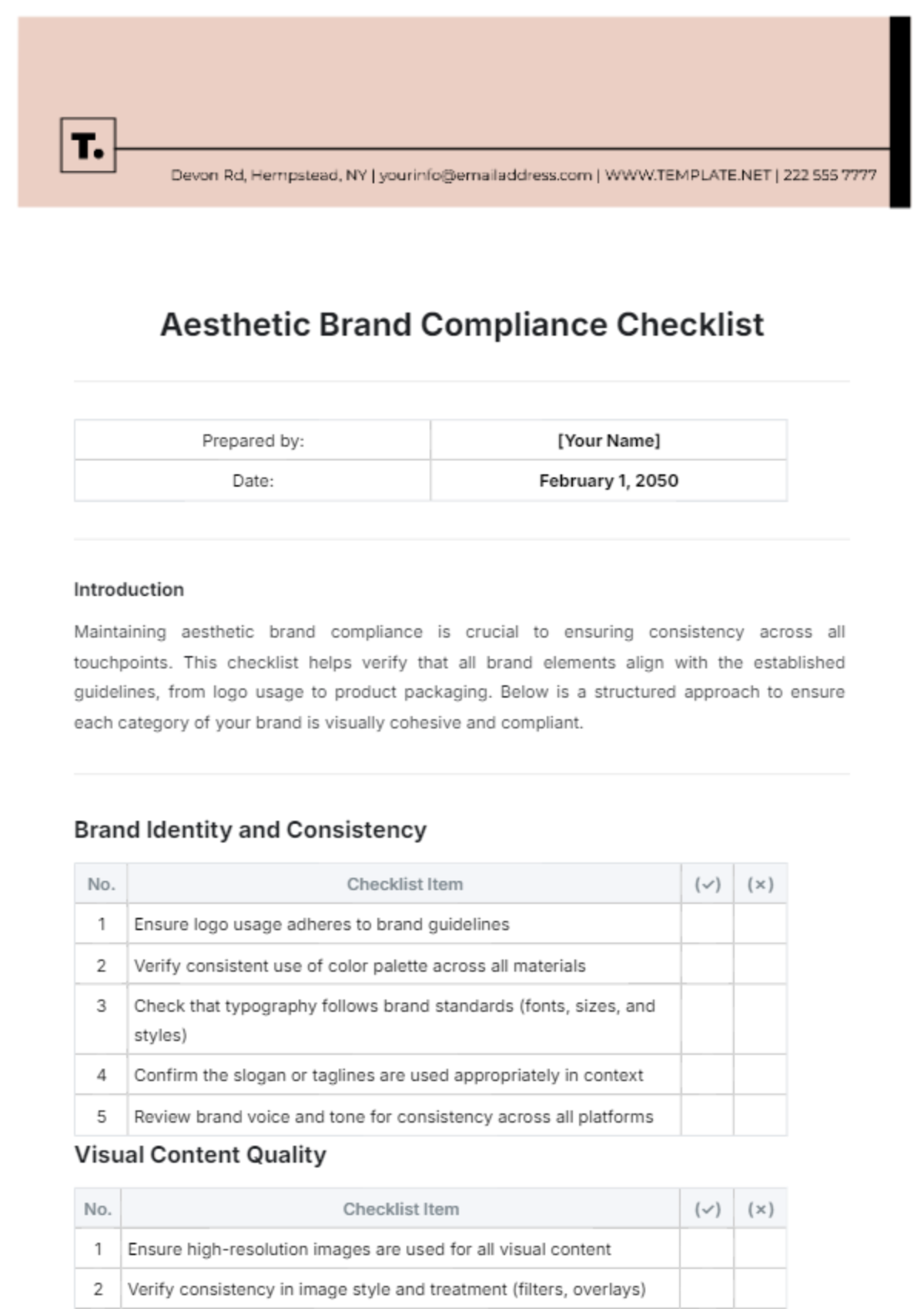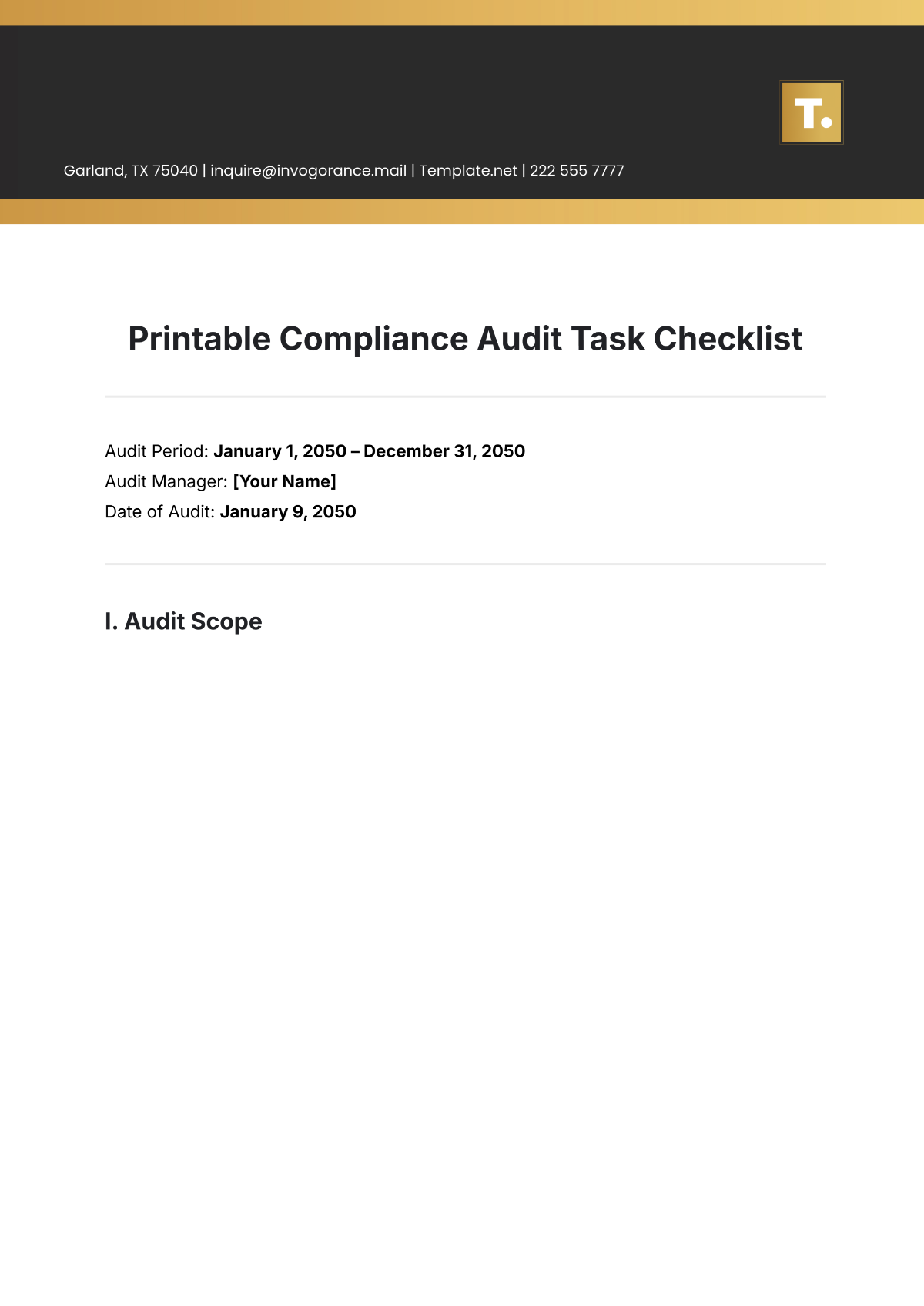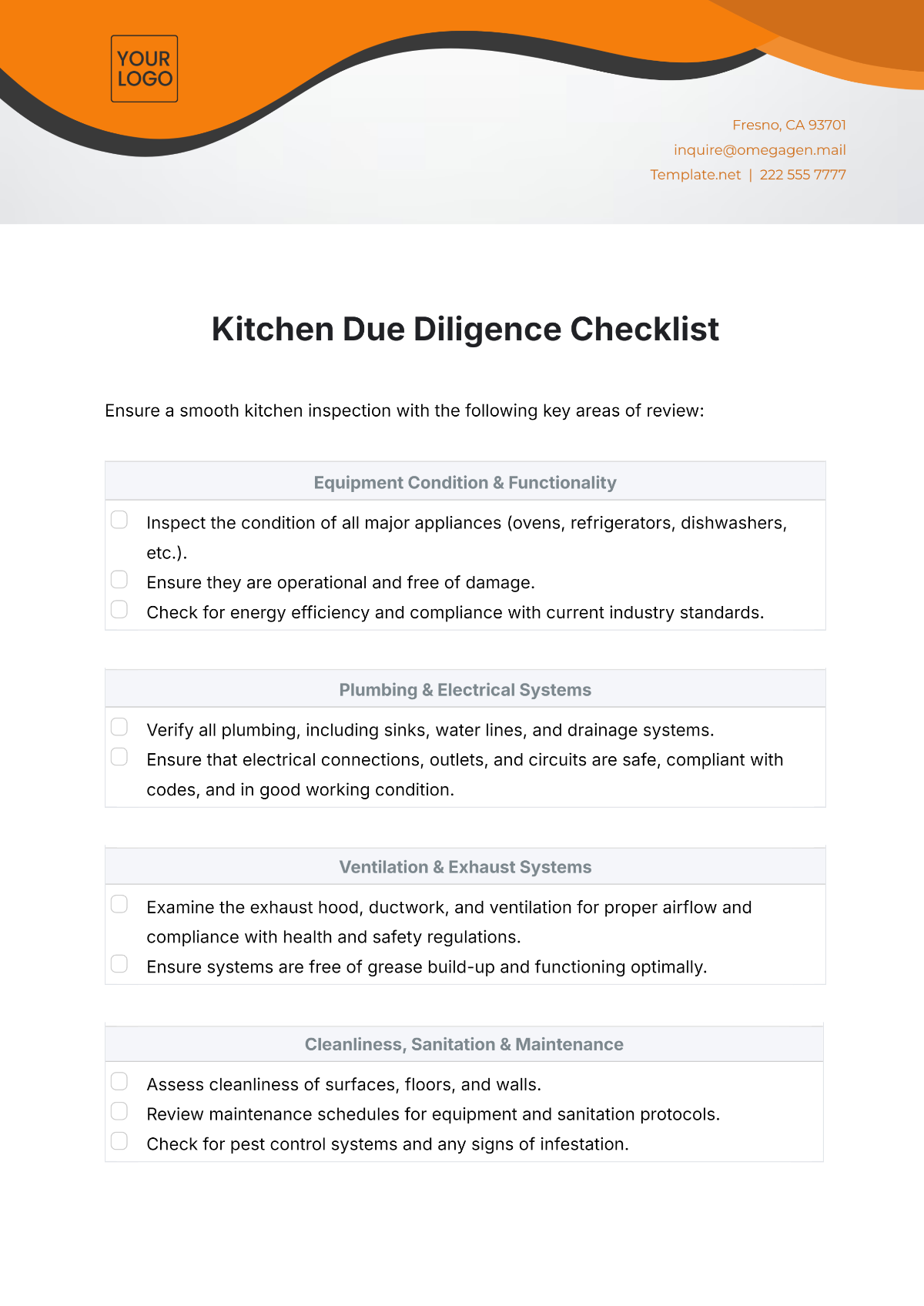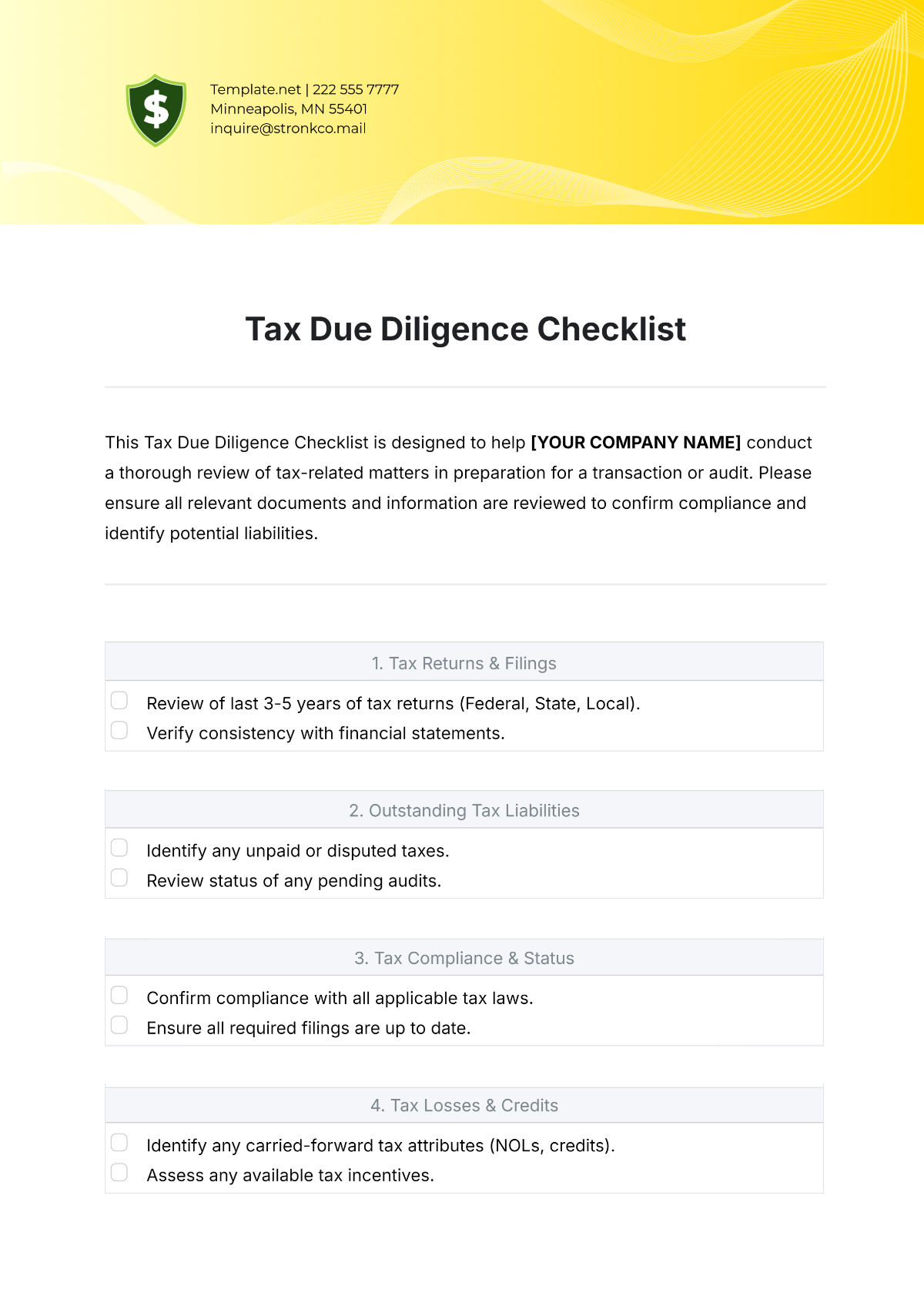IT Compliance Checklist
Conducted by: | [Your Name] |
Date: | April 10, 2050 |
Company Name: | [Your Company Name] |
Objective
This comprehensive IT compliance checklist aims to fortify organizational operations by meticulously adhering to regulatory standards, enhancing data security measures, efficiently managing hardware and software resources, and maintaining a proactive incident response strategy. The objective is to create a resilient IT environment that aligns with evolving regulations and industry best practices while safeguarding sensitive information and ensuring optimal system functionality.
A. Regulatory Compliance
Monitor and ensure compliance with local, national, and international regulations governing IT systems. | |
Regularly update and adapt compliance policies to align with legislative changes and industry standards. | |
Rigorously enforce compliance with the General Data Protection Regulation (GDPR) and the Health Insurance Portability and Accountability Act (HIPAA) to safeguard sensitive data. |
B. Data Security
Continuously strengthen cybersecurity by updating and enhancing firewall configurations. | |
Implement robust encryption protocols across all facets of company data to safeguard confidentiality. | |
Regularly validate and optimize data backup procedures, ensuring seamless restoration capabilities. | |
Conduct frequent and comprehensive security audits to identify and mitigate potential vulnerabilities. |
C. Hardware and Software Management
Thoroughly verify and manage the licensing status of all software, ensuring compliance and legality. | |
Conduct regular assessments to proactively identify and address potential hardware and software issues. | |
Strategically plan and execute timely updates to replace outdated hardware, optimizing overall system performance. |
D. Incident Response and Management
Establish and maintain a proficient incident response team, ensuring readiness to address unforeseen events. | |
Regularly test and refine incident response plans to enhance their effectiveness and responsiveness. | |
Document and analyze all incidents systematically, using insights to continually improve incident response strategies. |
